Patagonia, Part 1: Argentine Lake District
— Argentina, Patagonia, Ruta 40 — 8 min read
January 3 - 9, 2011
Patagonia, a distant land at the end of South America. An image of pristine, natural beauty sweeping to the horizon. Only recently settled by modern people, its vastness is still its trademark impression. Having Antarctica close by keeps the year-round temperatures cooler than similar latitudes in the northern hemisphere and the unbroken chain of the Andes all the way to Tierra del Fuego creates two distinct Patagonias: the wet and green side on Chile and the dry and flat side on the eastern rain shadow in Argentina.
In Northern Patagonia, which starts below Mendoza, both sides of the Andes are blessed with lush temperate forests with numerous lakes created by glaciers resulting in the Lakes District. Its popularity with international and local travelers makes it a highly touristic region, but still worthy of a visit by nature lovers. That being said, all the major attractions in Patagonia could be considered touristy, but that doesn't diminish the feeling of awe for the natural beauty and outside the urban areas, it's still one of the most remote places to travel in the world.
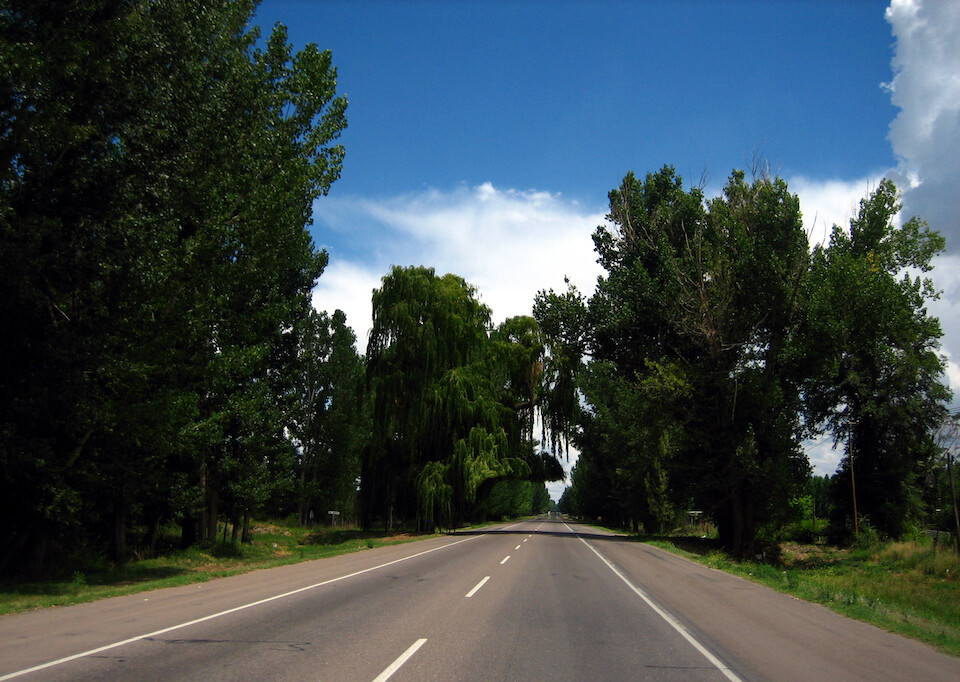
I set off from Mendoza in the new year of 2011, south on Ruta 40, which is now paved for the most part.
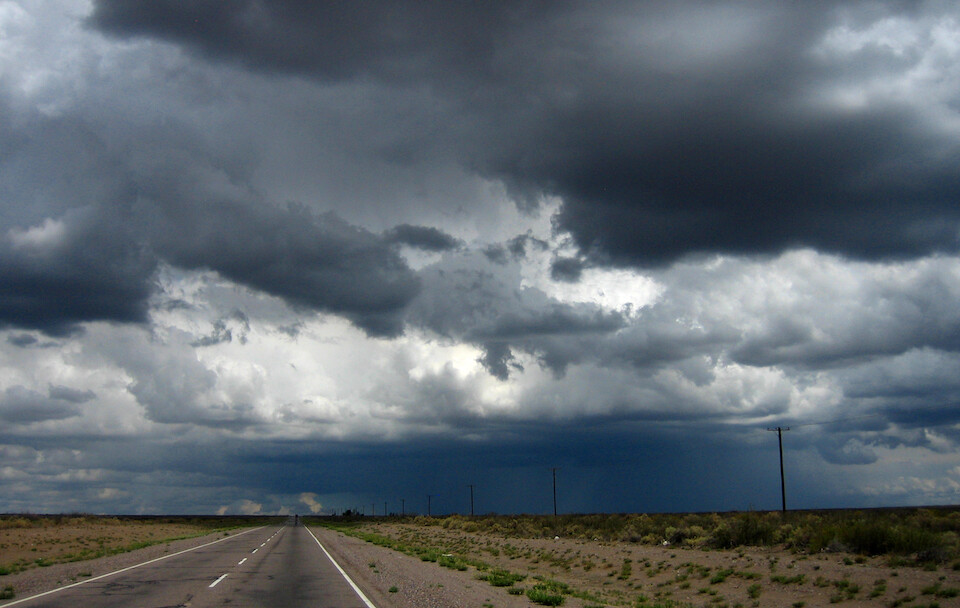
I watched this thunder cell move across the horizon and right into my path. Instead of waiting 30 minutes for it to pass, I suited up in all my rain gear and rode in, only to be thrashed around by the strong winds and pelted with the force of a water cannon.
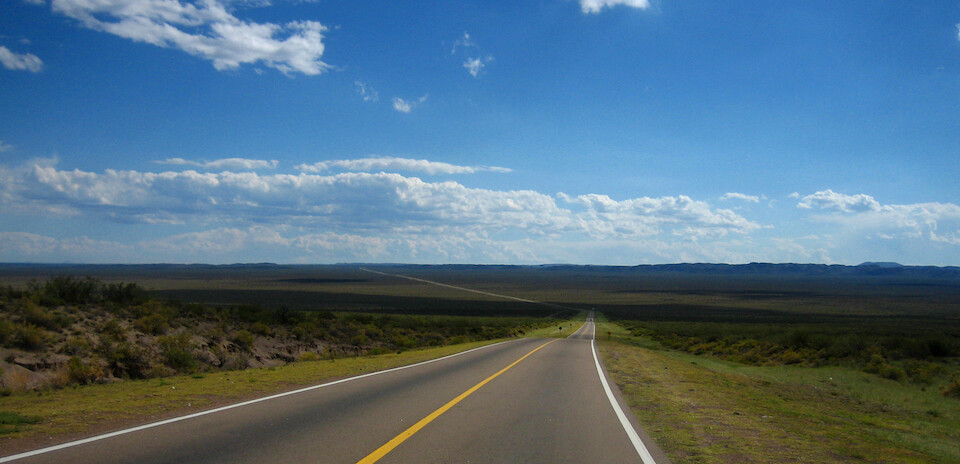
The sky cleared up and I had about 1,200 kms (750 mi) to cover before getting to the Lake District.
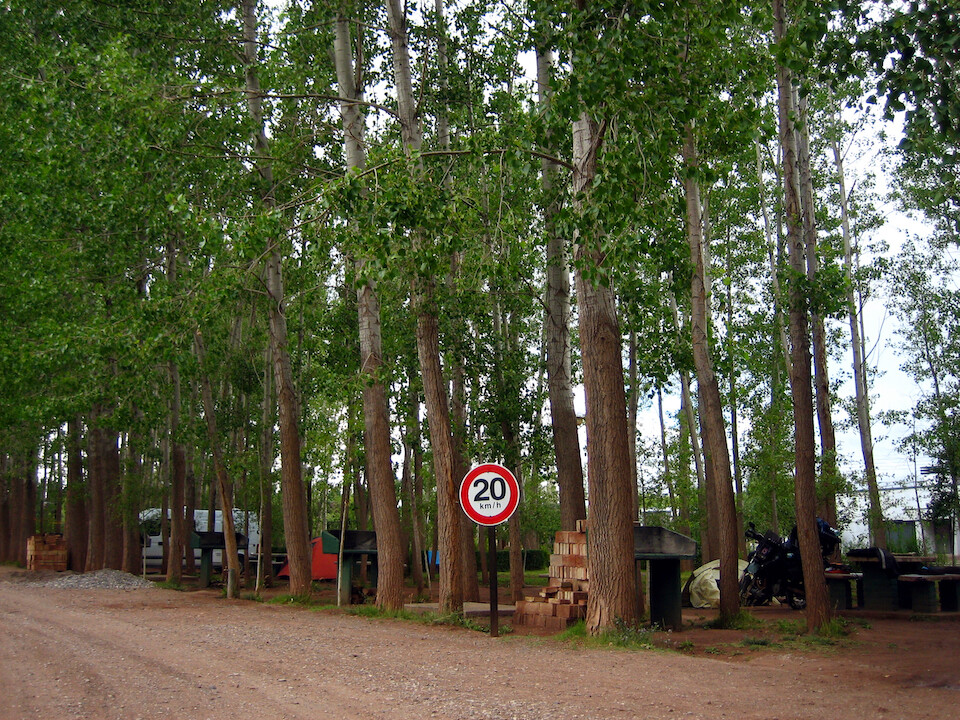
At the municipal campground in Malargüe. In contrast to all the other Latin American countries (Chile included), Argentina has a well-developed camping culture among the general populace. Families make camping road trips along Ruta 40 and mostly stay at the municipal campgrounds that are in every town in the region. These are sites for pitching a tent, rather than picturesque camping locations, but they're the most affordable form of accommodation in pricey Patagonia. A tent site here cost P30 (USD 7.50), which includes a hot shower and electrical outlets and firewood, if available.
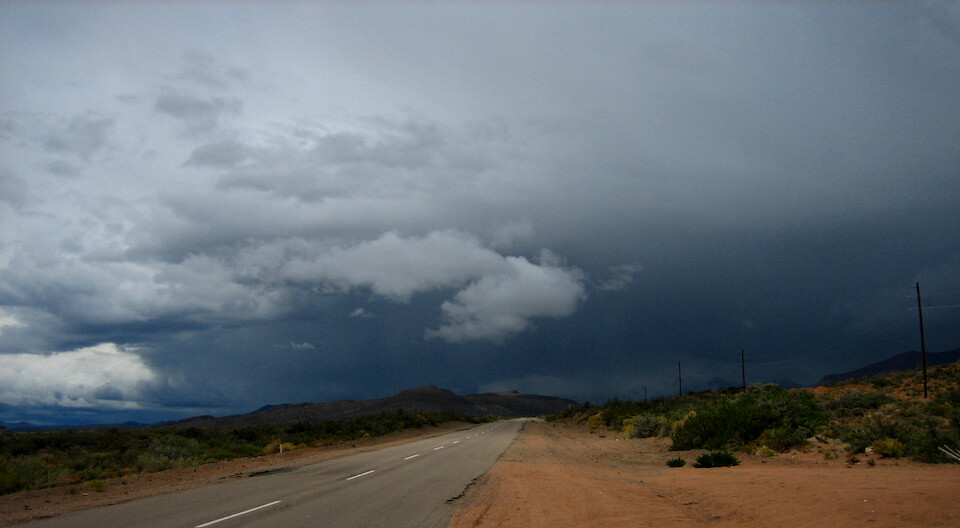
The next morning, heading into another rain storm. This is the best time to visit (the height of summer), but Patagonia is no usual land, with strong winds and storms common throughout the year. It's just that it's less cold now for a few months with no ice on the ground.
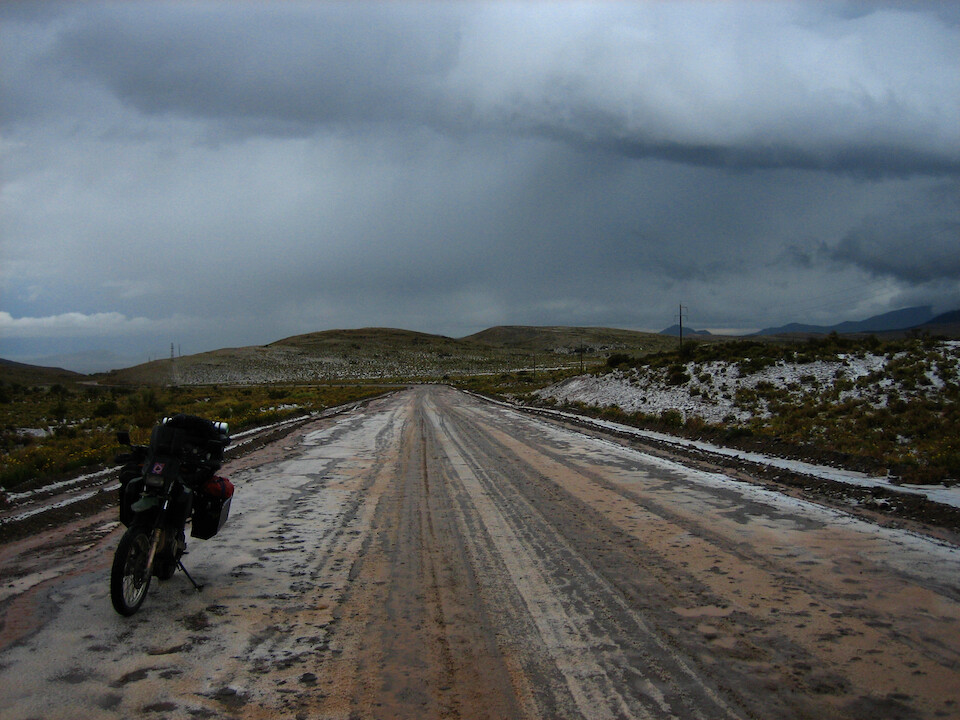
Ok, I take that back. You can come across ice year-round. I crossed a small ridge, only peaking around 2,000 m (6,560 ft) but that was enough for the chilling temperatures to freeze the falling precipitation into hail.
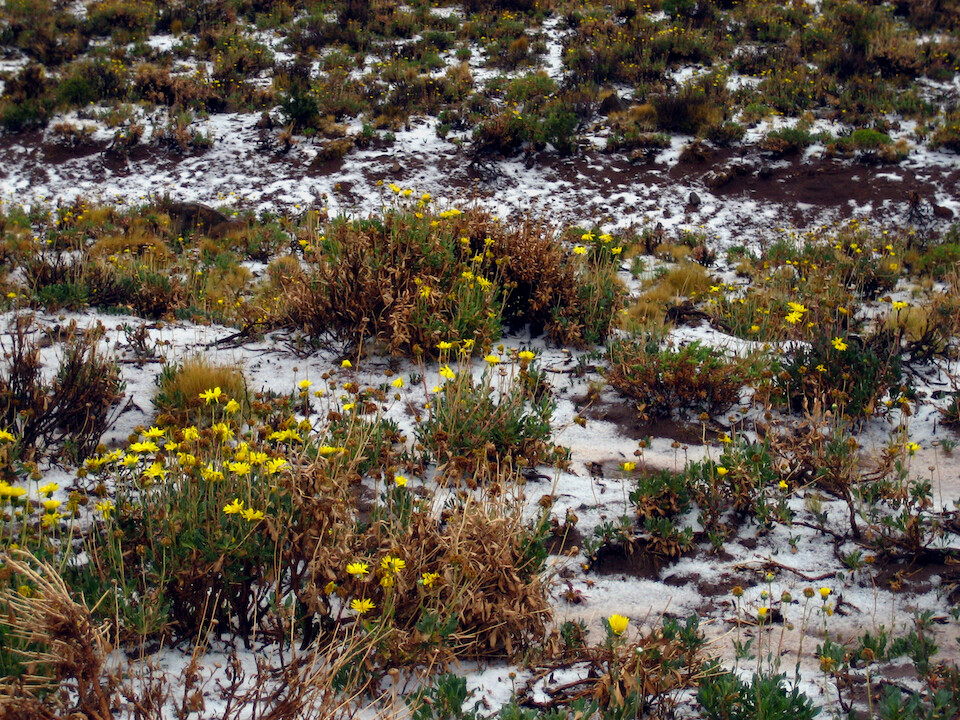
It looks like snow, but is actually small balls of ice and having never ridden through a hail storm before, it was a strange experience to be pelted softly from all sides. If it wasn't for the near-freezing temperatures, it could've been an enjoyable massage. The heavy duty Kevlar fiber of my Motoport suit was adequate protection.
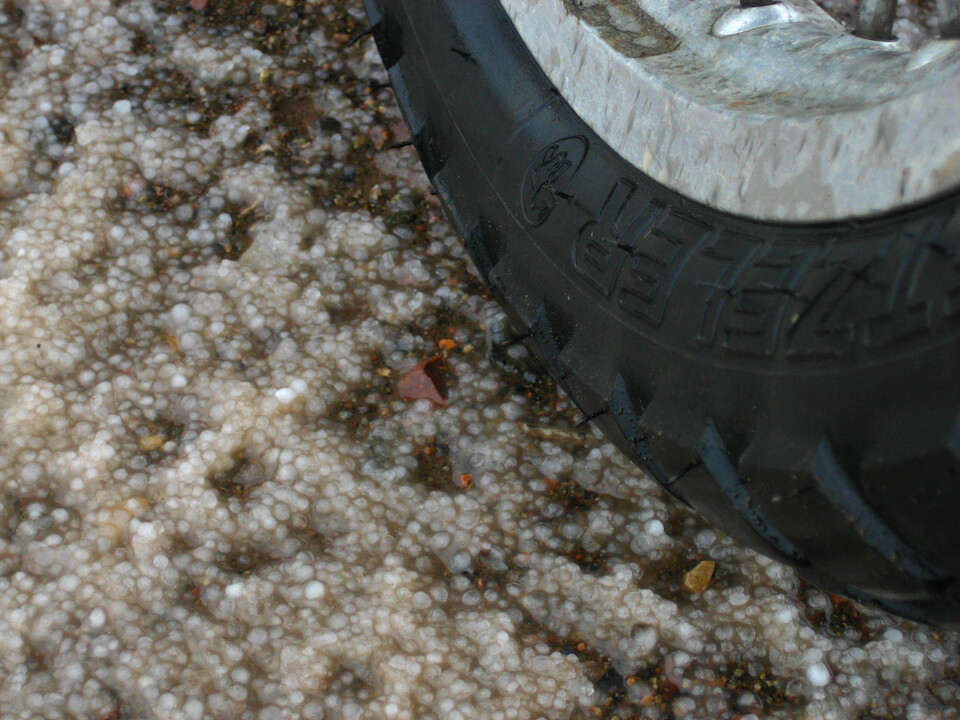
Hail on the ground, but not a significant amount to affect mobility.
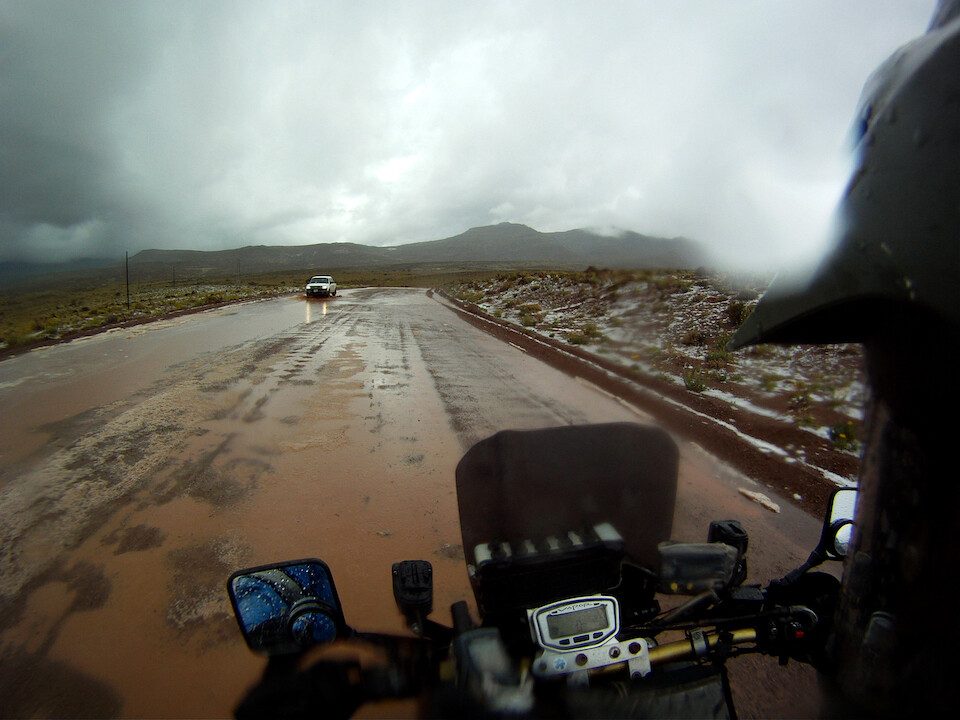
As I came down the other side, the slightly warmer temperatures turned the hail back into water and an unpaved section...

...lead to riding through small streams of mud.
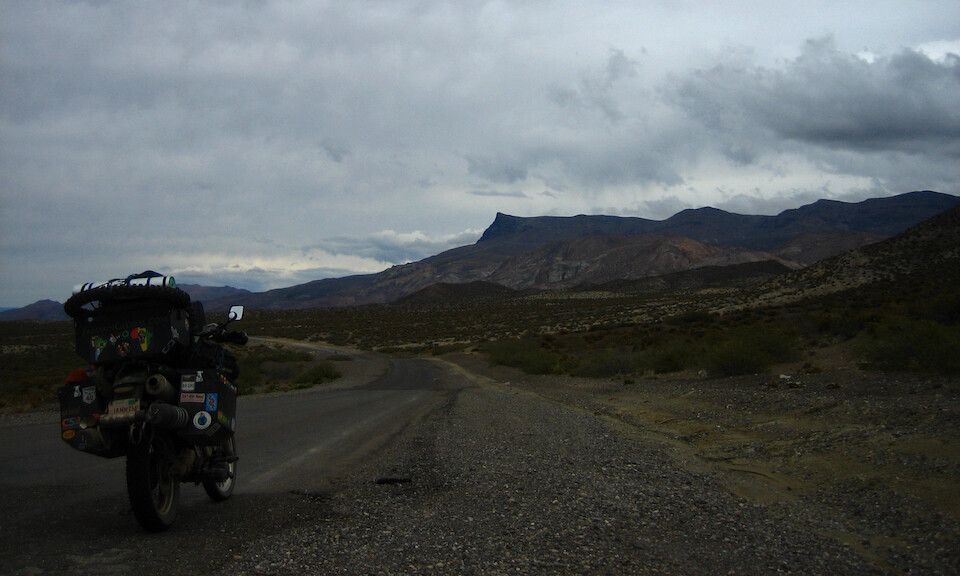
The good thing about the strong winds is that the storms go as quickly as they come.
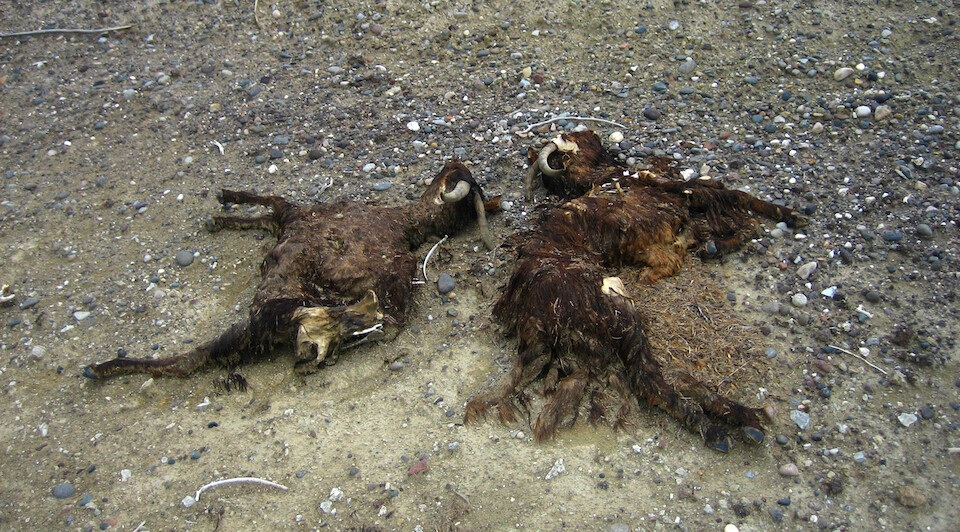
Two sheep by the road side, slowly being claimed back by the land.
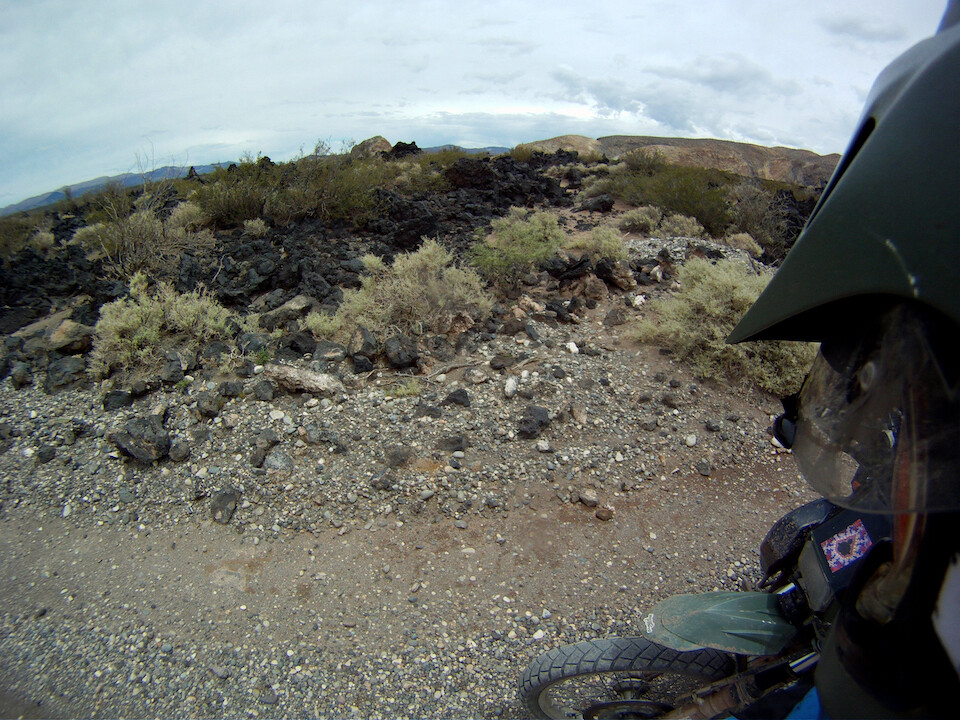
Taking a break and noting the black lava rocks and small shrubs covering the land.
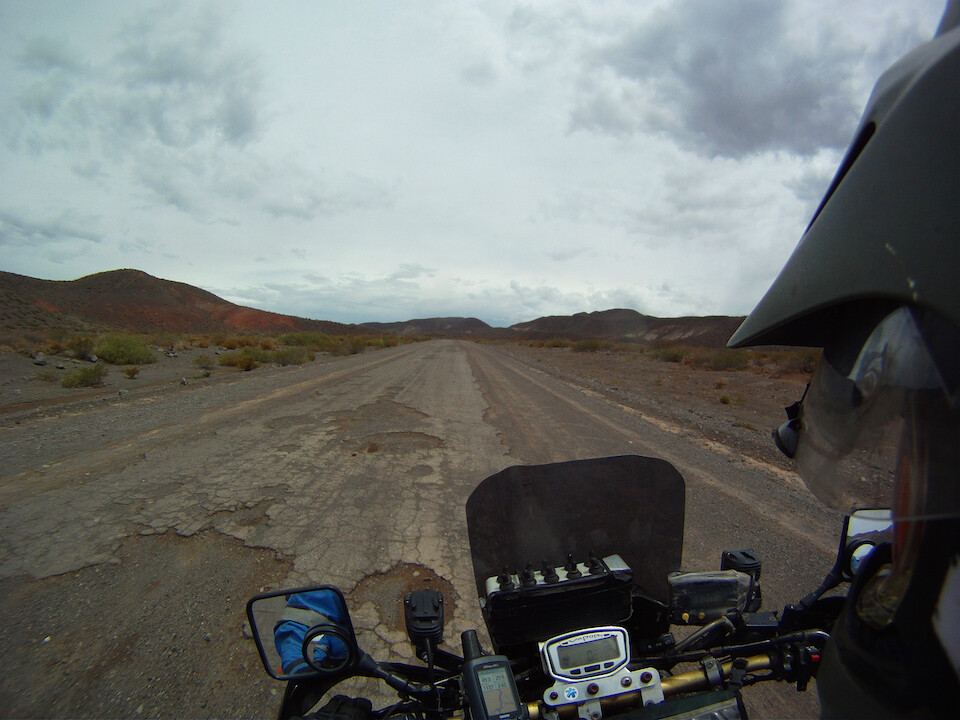
The road was neglected in places and with no major towns around with very little traffic on this remote route, it can be expected. I much prefer a proper dirt road than deteriorating pavement.
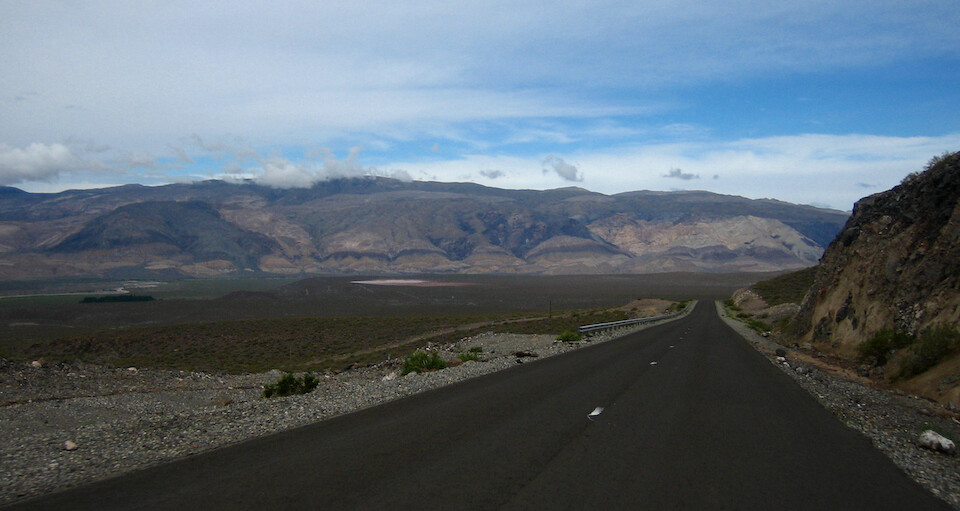
The Argentine side of Patagonia is defined by a series of steppes; wind-swept plateaus that are devoid of much vegetation. The temperatures were around 16 C (61 F) with wind chills on the bike at speed at around 10C (50 F) or less.

Rain storms moving across the horizon. I was looking forward to a warm shower.
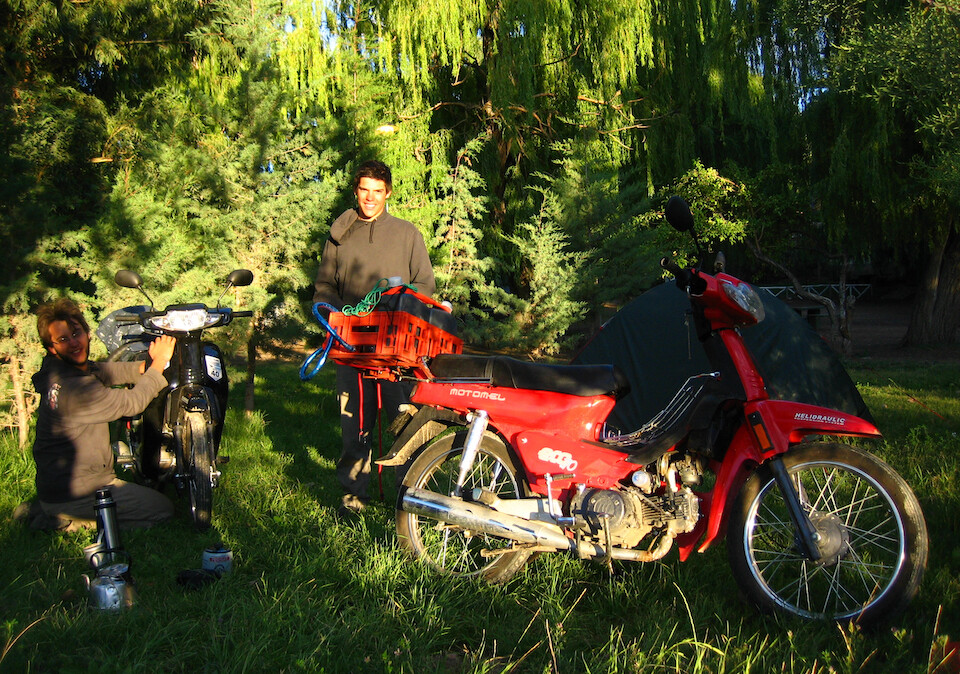
At the municipal campground in Chos Malal on Rio Neuquén, I met these two brothers, Juan and Cocho from Bariloche who were on a trip to the northern end of Ruta 40 on 70cc Motomel Chinese mopeds. They were doing this during their summer break and would head to Buenos Aires to continue university studies. The poor chaps could only achieve a maximum of 70 kph (44 mph) with the wind behind them and said they chugged along at 25 kph (15 mph) on the long uphill stretches. They had limited mechanical experience but knew better and were carrying spare pistons, expecting the tiny motors to give out at some point. They were envying sanDRina and all the goodies on her, yet they knew that it's the journey that's important, not your mode of transportation.
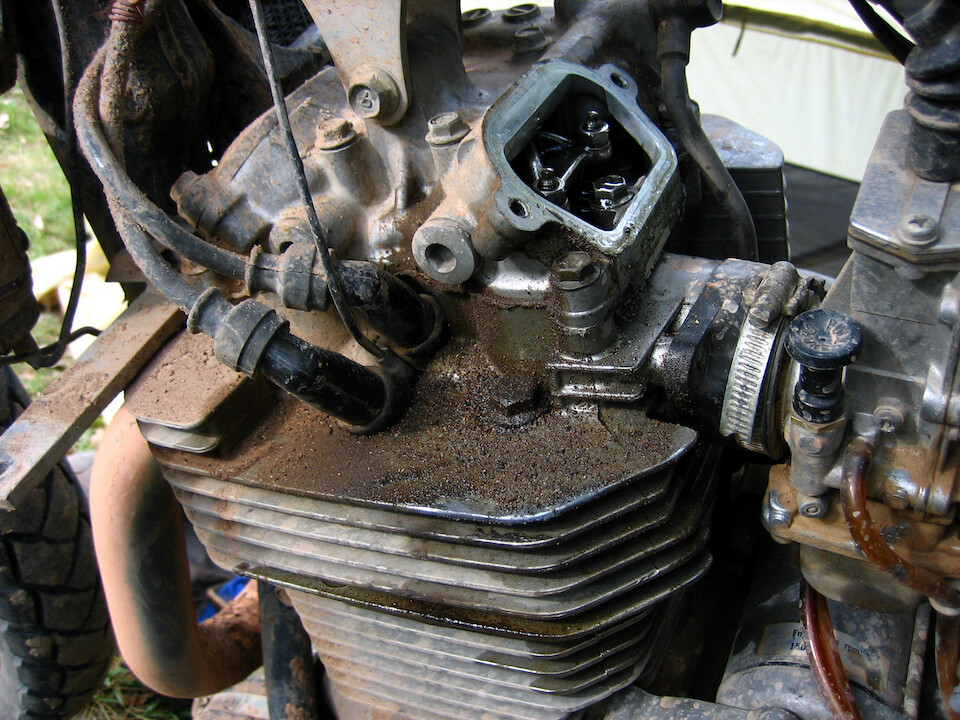
And they look some solace in seeing the maintenance I had to do to sanDRina. In the afternoon, I noticed an oil leak from the top of the engine.

After setting up camp, I investigated and found the root-cause to be hardened gaskets in the valve inspection covers. I had removed these covers in Mendoza to do a routine valve clearance check and didn't inspect the status of the gaskets upon reassembly. They had hardened over time and were not providing any compression resistance anymore between the valve cover and the cylinder head, which is required to provide a good oil seal. I broke the seal when I did the valve check and oil was subsequently slowly seeping out. I made a temporary gasket with RTV silicone and that would do the trick until I could get a hold of some new gaskets.
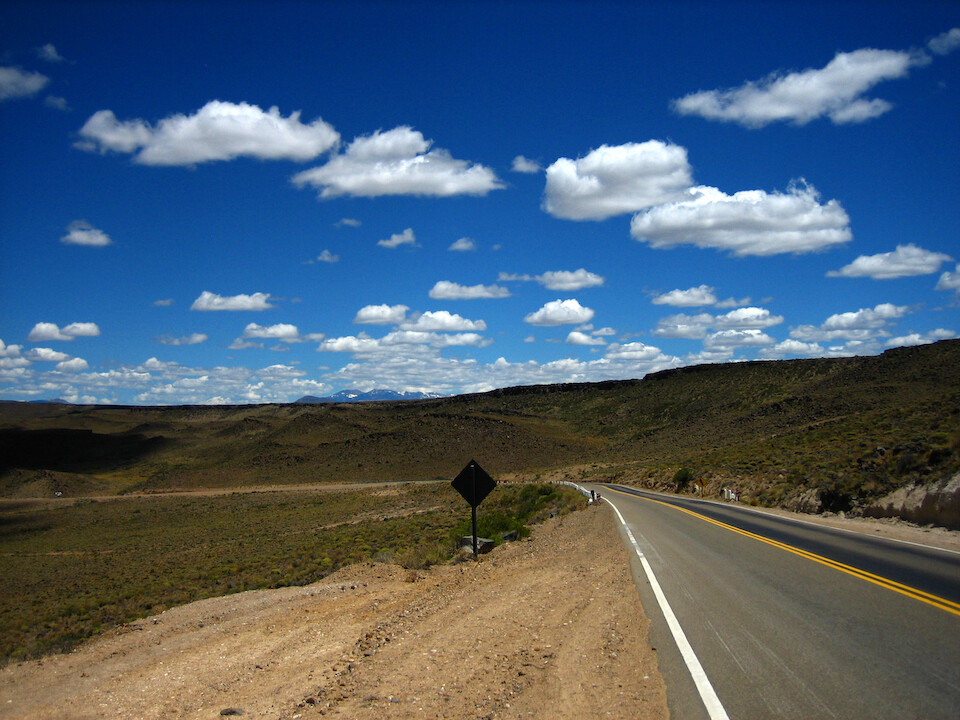
Continuing south from Chos Malal on a beautiful day in Patagonia.
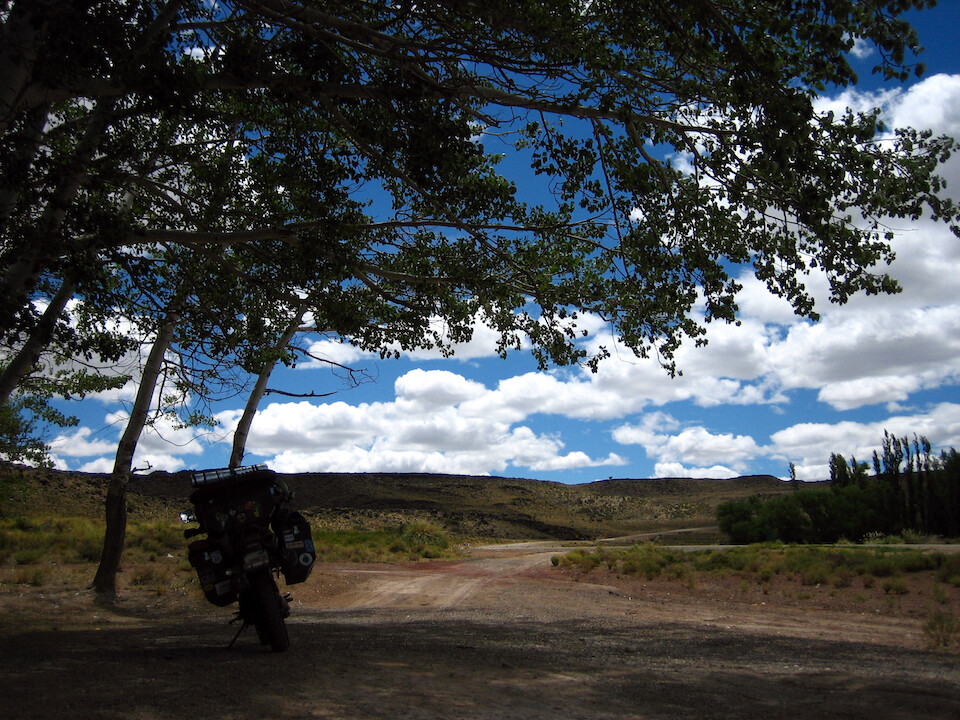
Taking a break among a rare grove of trees.
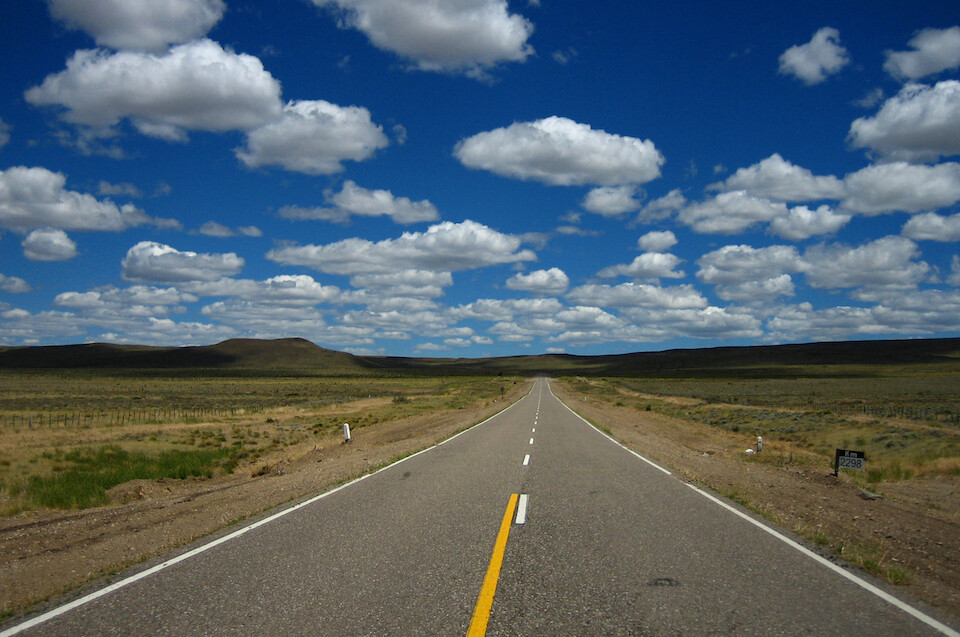
'Patagonia. Wish you were here.' A mile marker indicating 2,300 kms (1,430 mi) left to Tierra del Fuego.

The land is naturally devoid of any flora taller than a shrub, and the only trees were those around farm houses. Sheep, introduced from the Falkland Islands, are the mainstay of estancias (ranches) that span all of Patagonia.

The road twisted up and down big ridges and valleys.
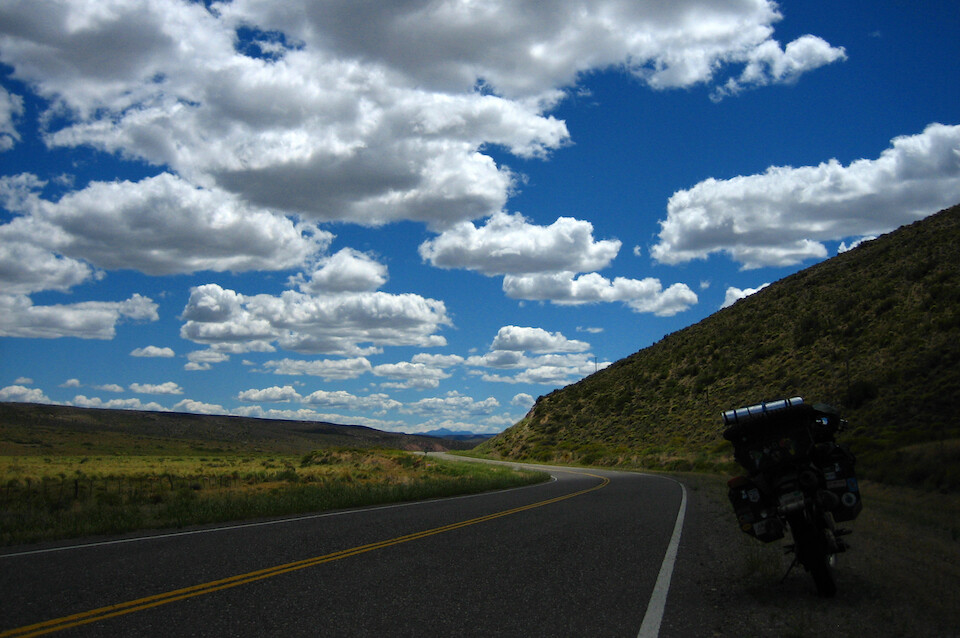
I love big skies and enjoyed staring at the clouds over big distances and making out shapes of dogs, dragons and DRs.

A wide view of an expansive valley and surrounding steppes.
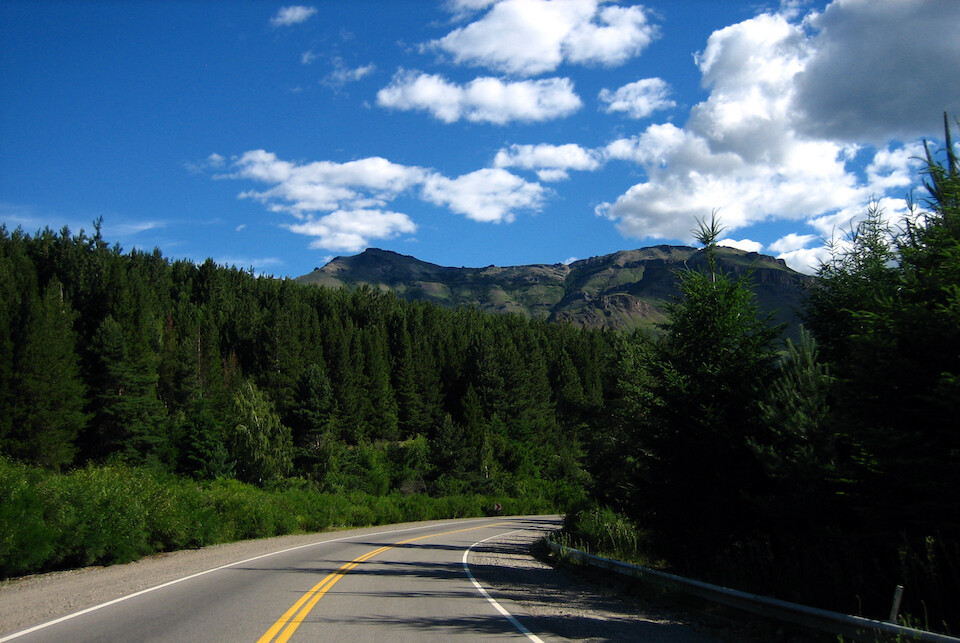
And just like that the scenery changed into forests of evergreens and I knew I was in the Lake District. I passed the first town of Junin de Los Andes and...
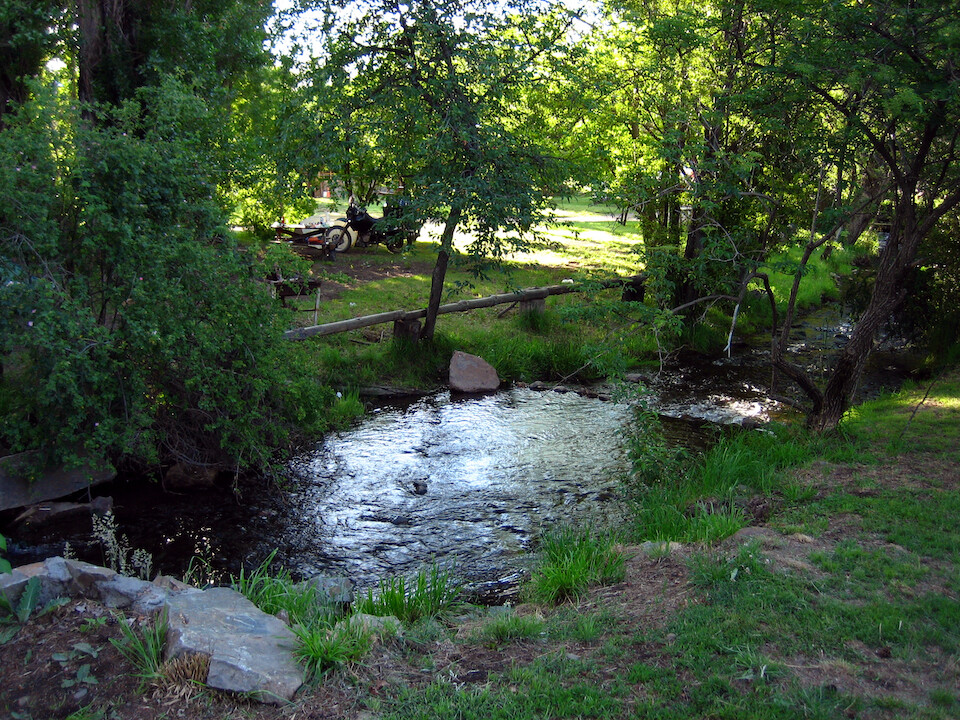
...found a nice campsite in San Martín de Los Andes.
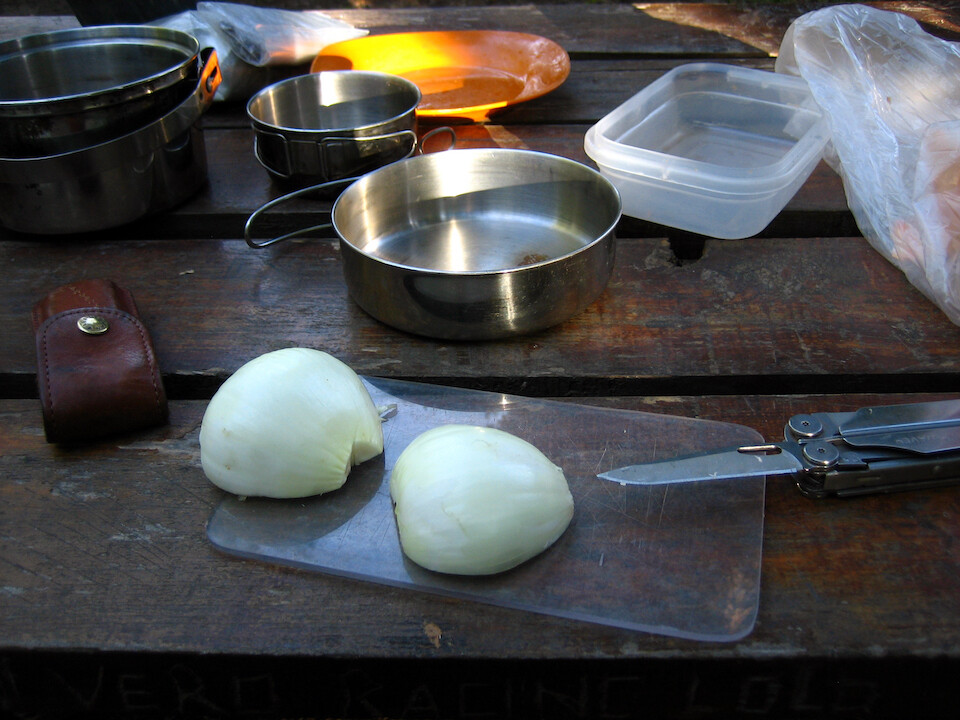
Having more sunlight as the latitudes rise, I bought some veggies for a bit more elaborate dinner. How do you like the little Lexan cutting board?

Cooking up some red bell peppers with onions and peas.
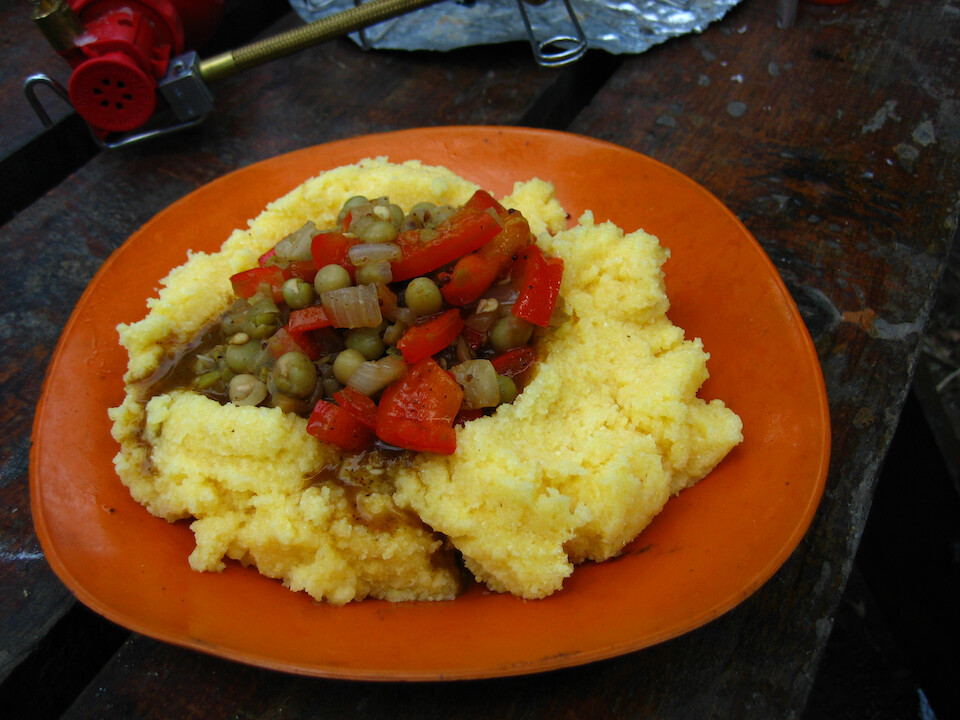
Served up with polenta, a cheap corn-meal food widely available in Argentina (coming from Italian influence).
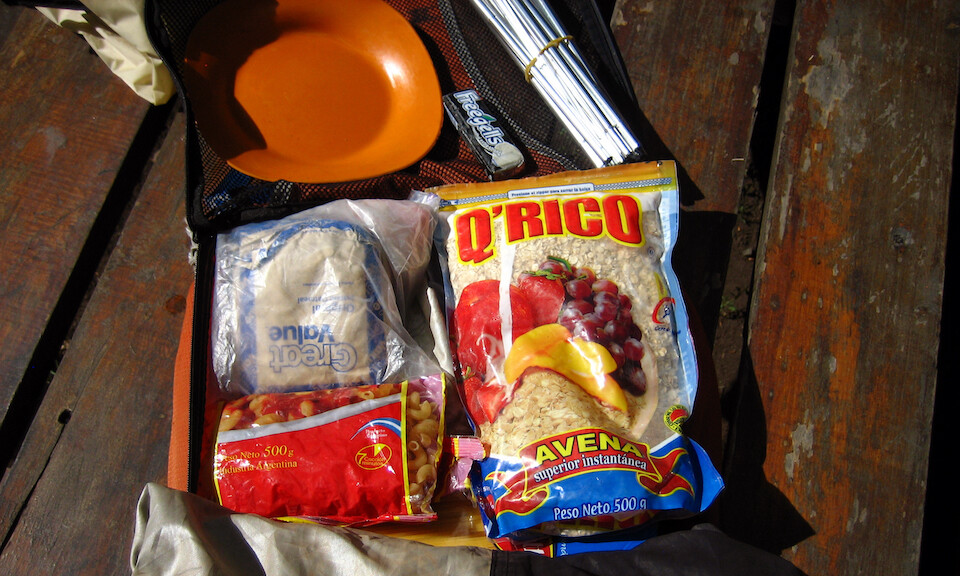
A shot of my food bag with lots of oatmeal and some pasta.
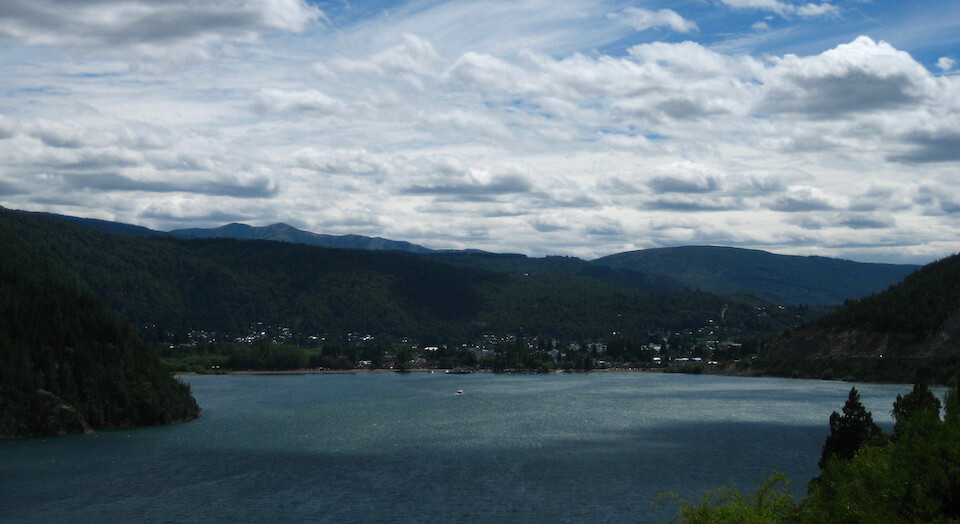
A view of the stylish town of San Martín on the shores of Lago Lacar. It's a popular destination for Argentines on holiday and January is the traditional month of travel for most families.
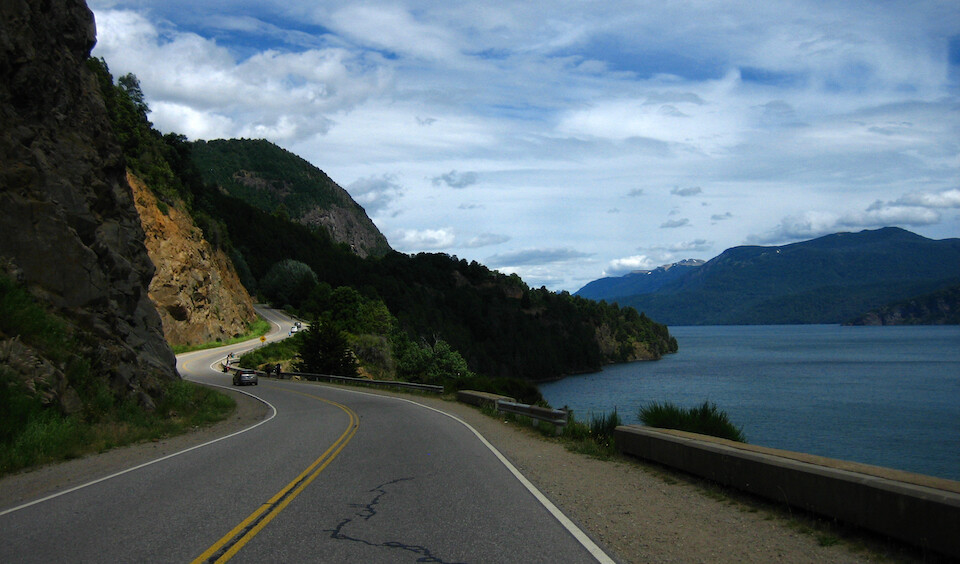
From San Martín, the scenic Ruta de los Siete Lagos (7 lakes route) meanders through Parque Nacional Lanín. It's fame has grown over the years and the road was crowded with enthusiastic hikers, bicyclists and family cars.
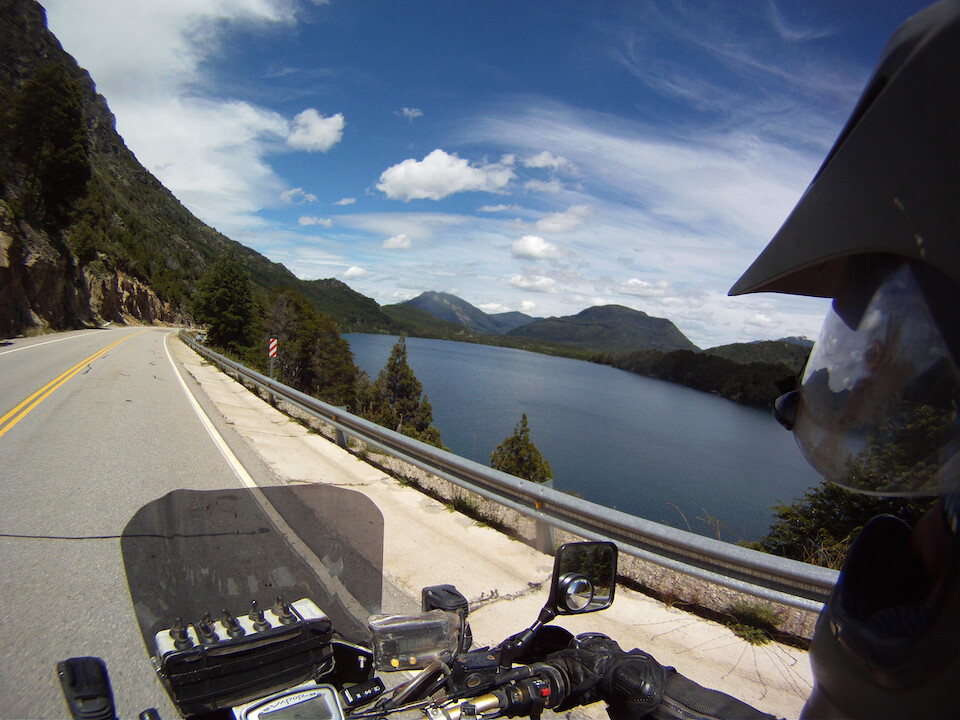
Regardless of the crowds, the scenery is stunning and to be so close to deep blue lakes is a wonderful feeling.
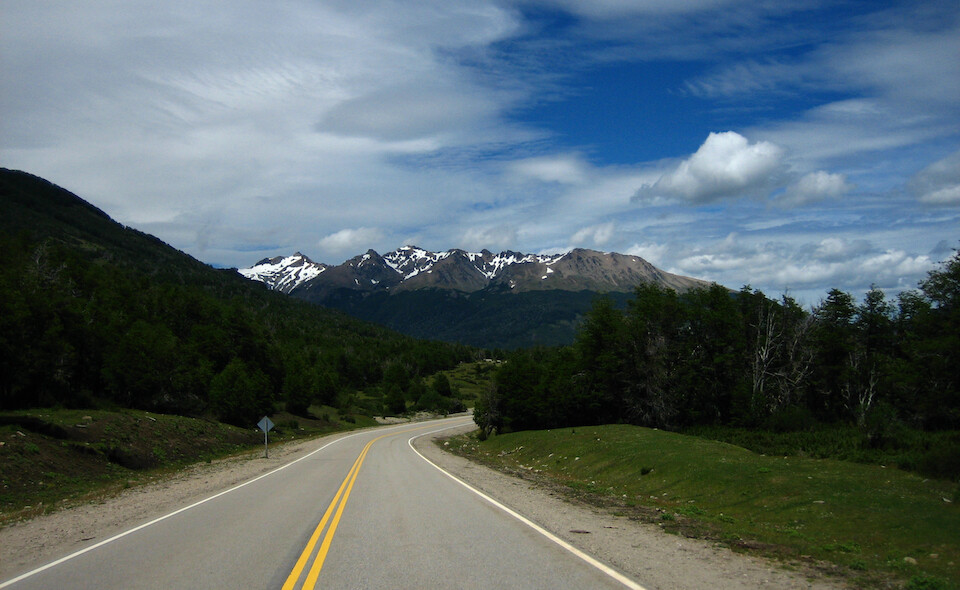
The snow-capped Andes of Parque Nacional Lanín.
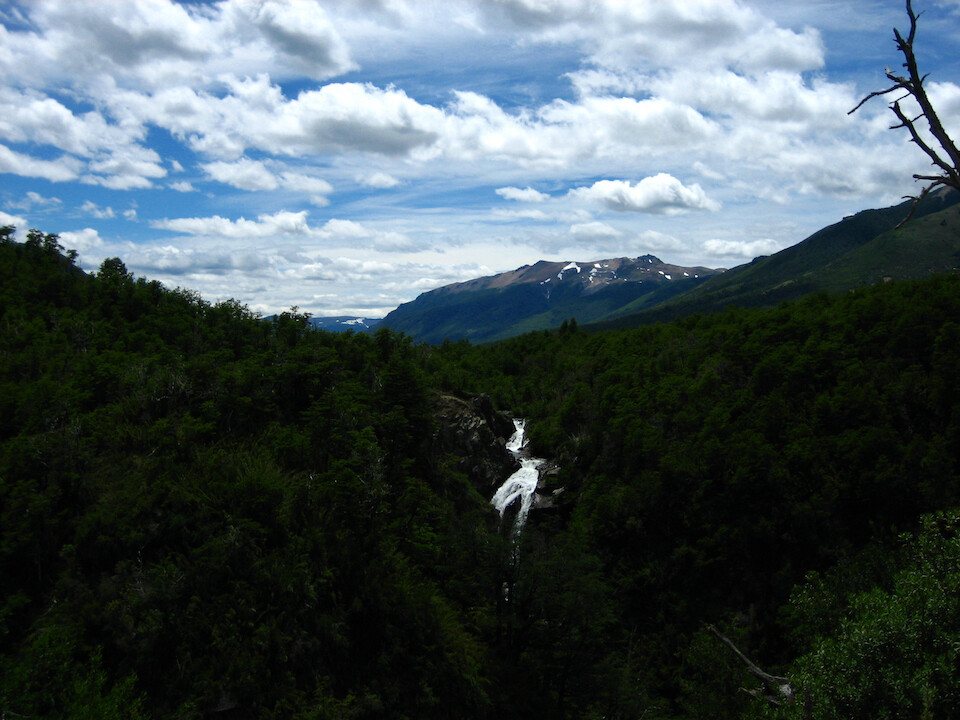
A waterfall on Rio Hermoso (Beautiful River).

At the lookout point for the waterfall, I attracted a lot of attention and prompted questions about my trip from the other park visitors. Argentines are very friendly people and this group of friends from Buenos Aires who were on a multi-day cycling trip chatted me up with questions on India and the trip down the Americas.
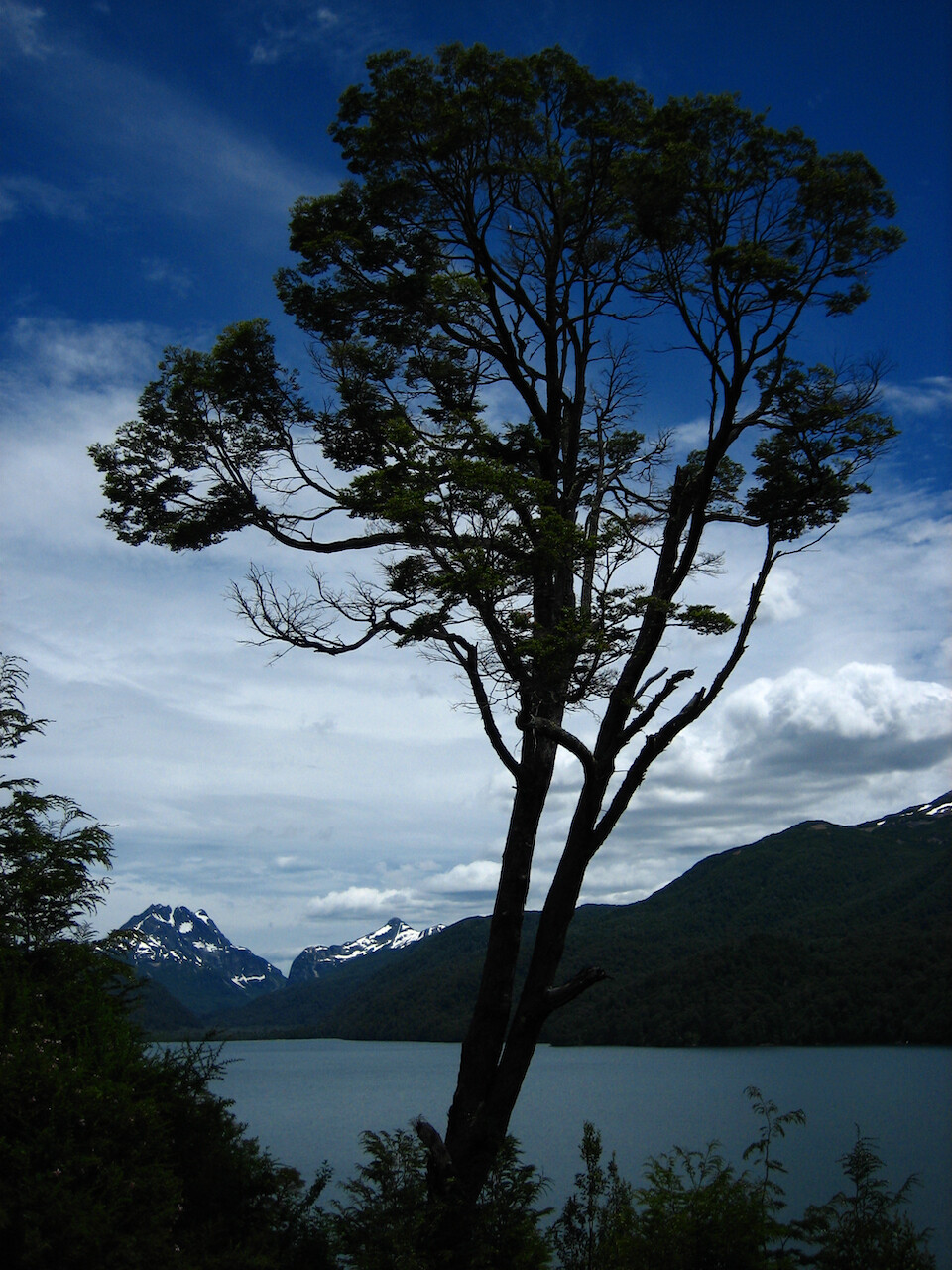
A tree leaning into Lago Villarino.

A volcano on the border with Chile looking over Lago Villarino.
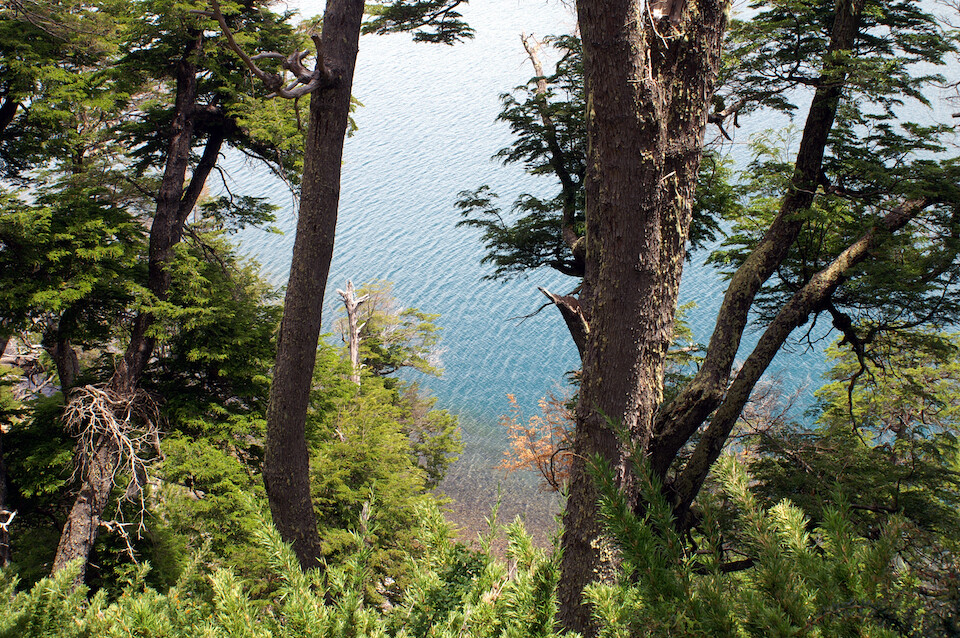
The waters are super clear and change colors depending on the particular minerals in each lake.
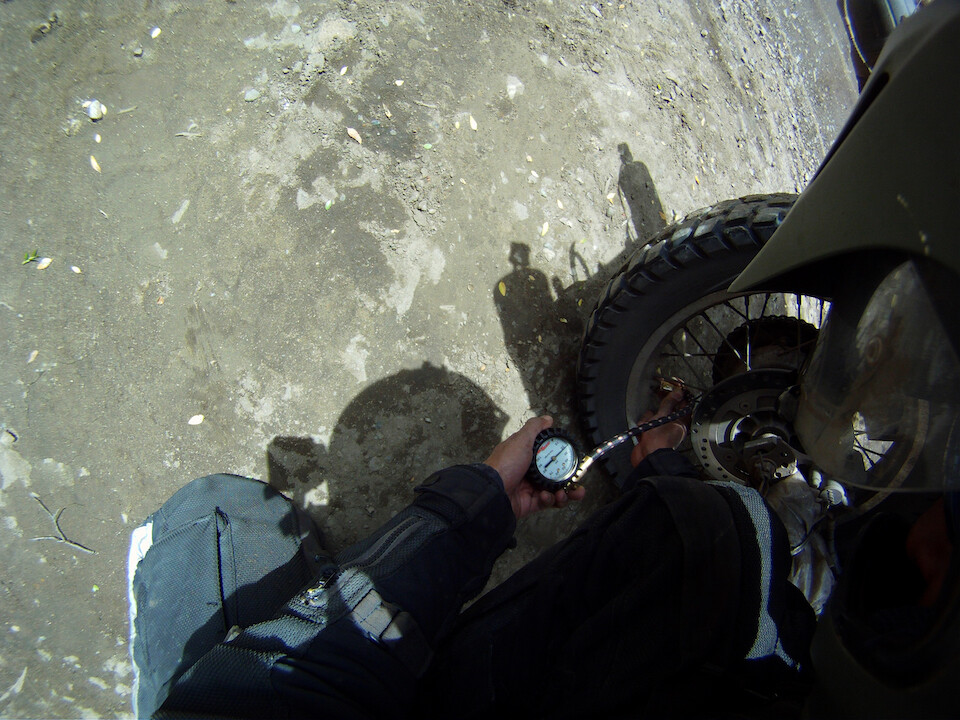
Reducing air pressure as the road got bumpy over a stretch still under construction through the park.
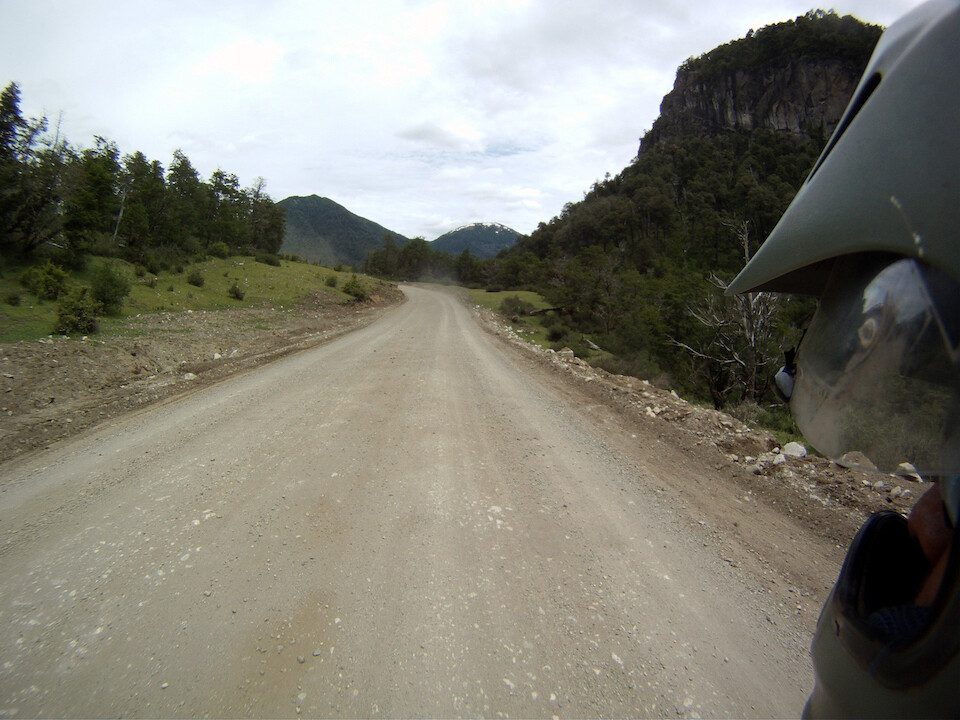
The off-road was mild and will probably be paved within the year.
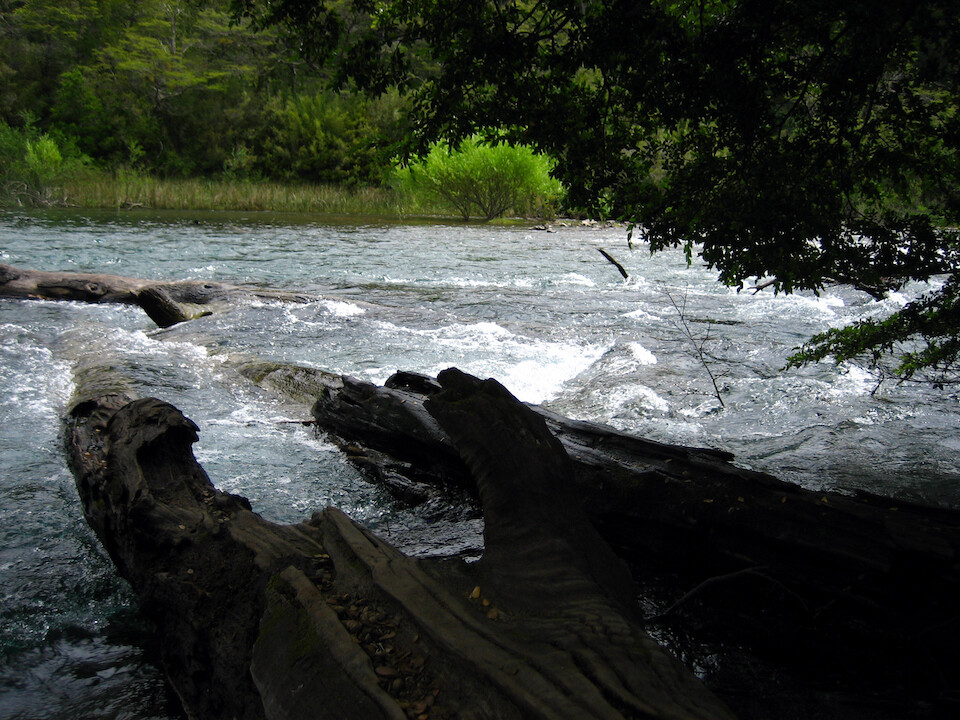
Having a lunch break by this flowing river.
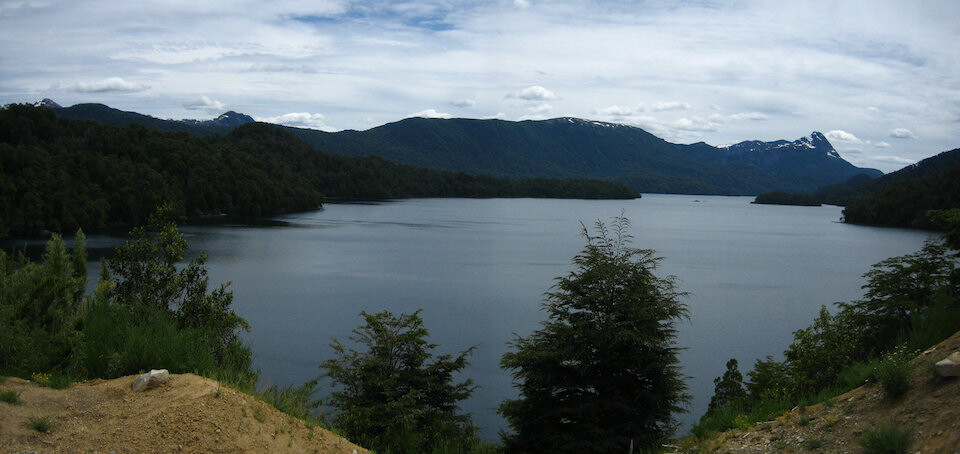
A wide view of Lago Correntoso.
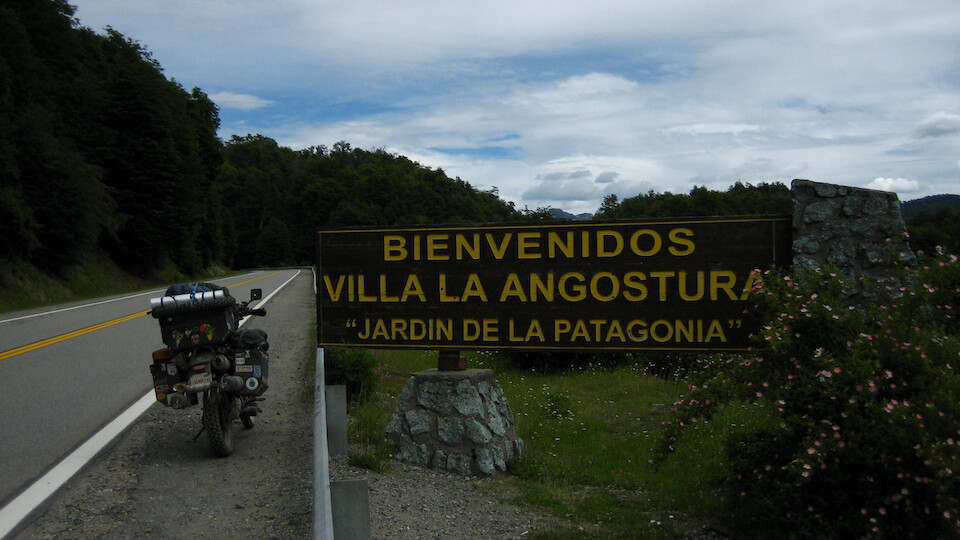
Getting to my next destination, the town of Villa La Angostura (meaning town by the narrows).
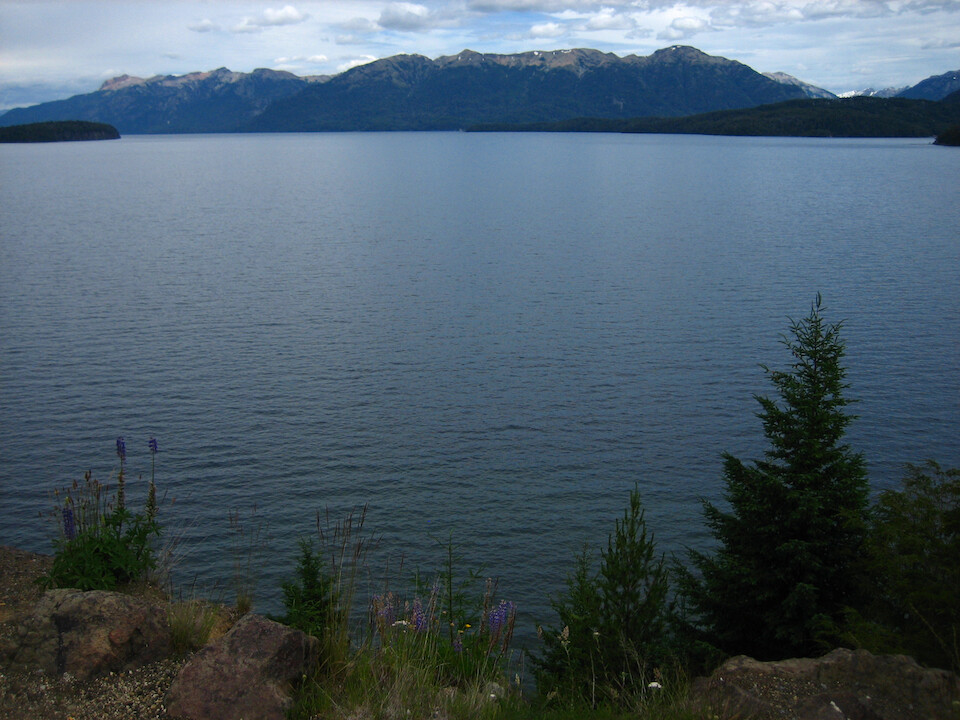
The town is on the shores of massive Lago Nahuel Huapi, part of the national park of the same name. Elevation is 2,510 feet (770 m).
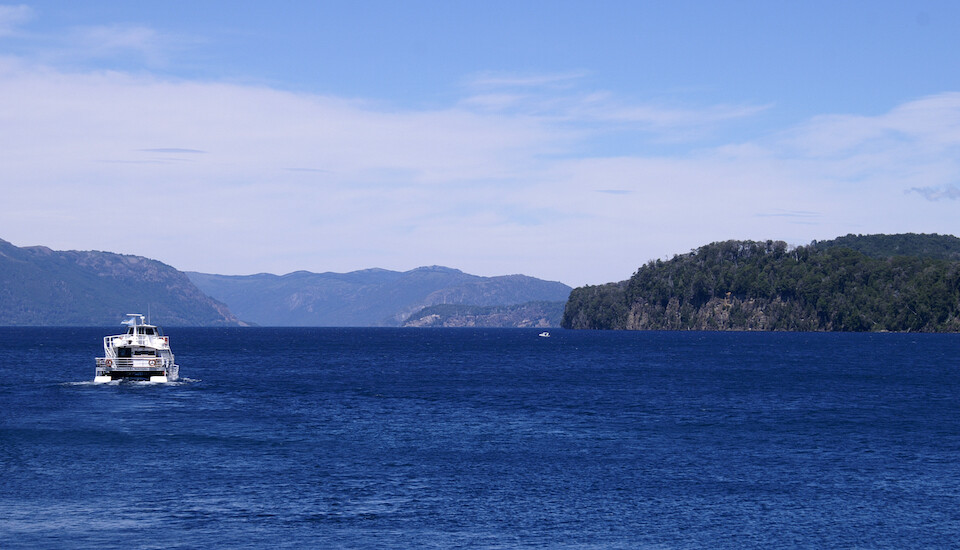
I met up with Gustavo thru CouchSurfing and he showed me the sights around town. A tour boat heading to the Arrayanes Forest from Bahia La Mansa.
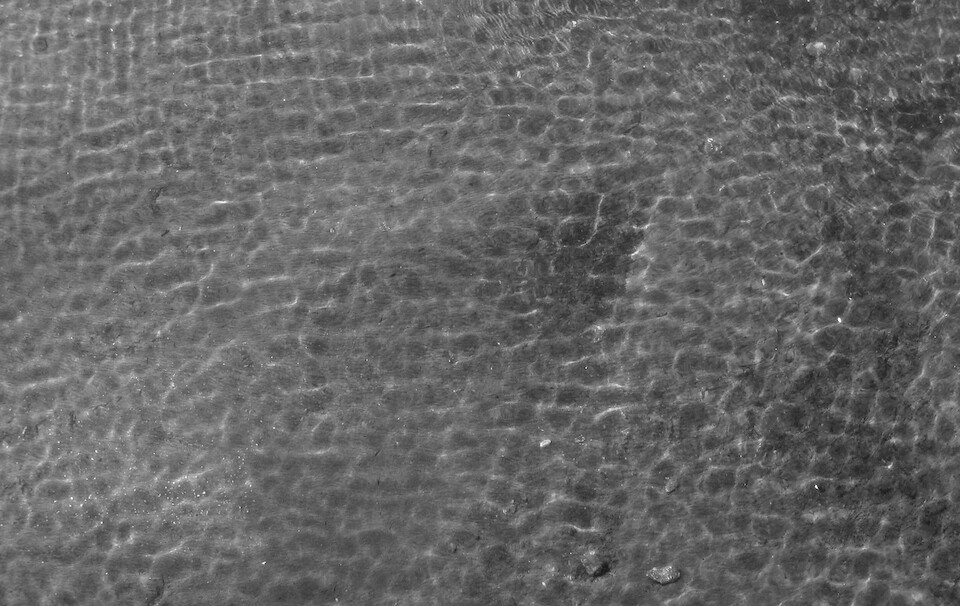
Looking through the shallow water reflecting in the sunshine.
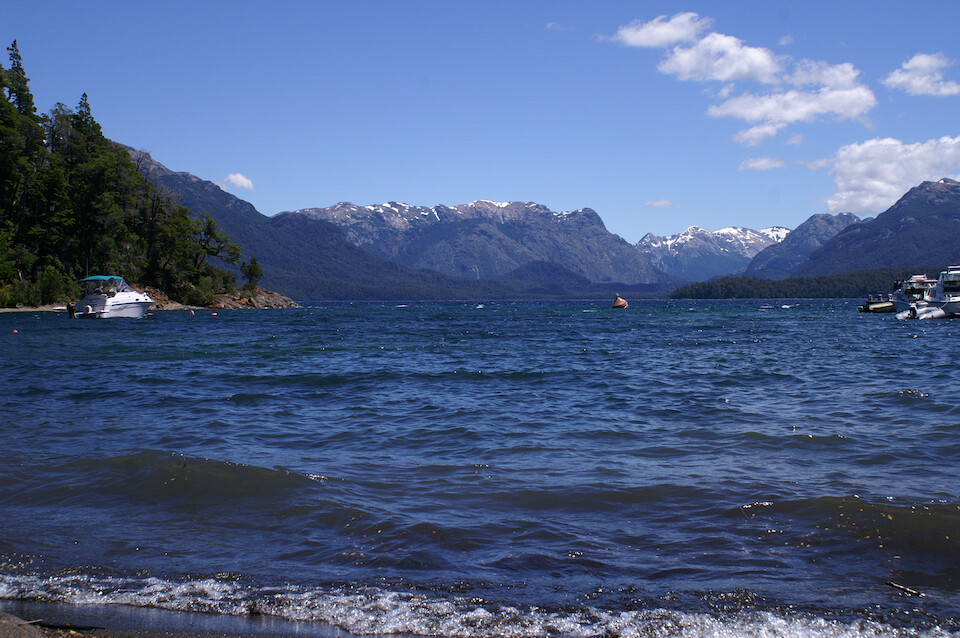
Life must be good on the shores of Lago Nahuel Huapi with a backdrop of snow-capped mountains.
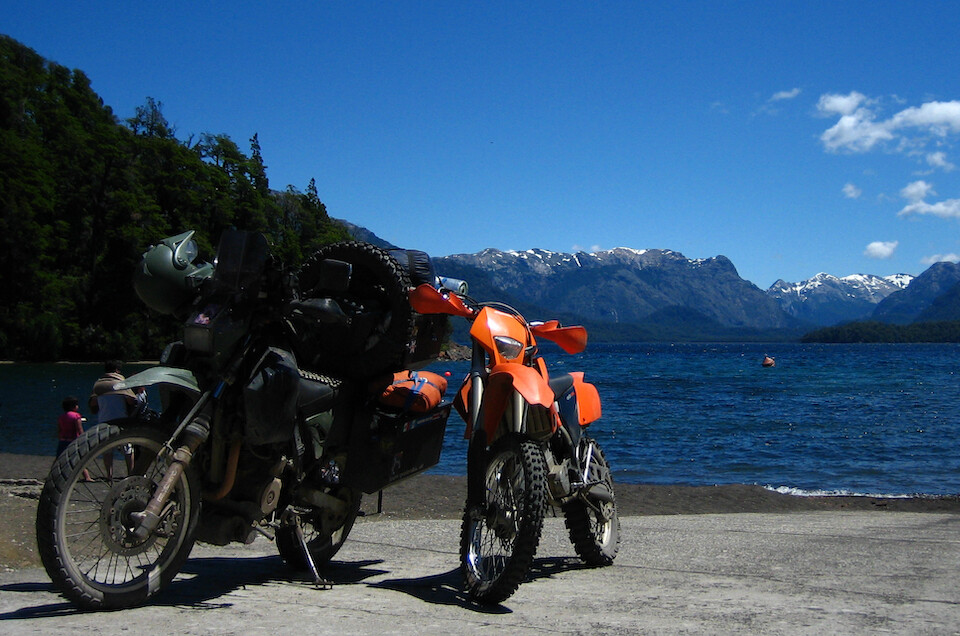
And it's better with a motorcycle. Gustavo is an avid off-road rider and that's his KTM 450 EXC.
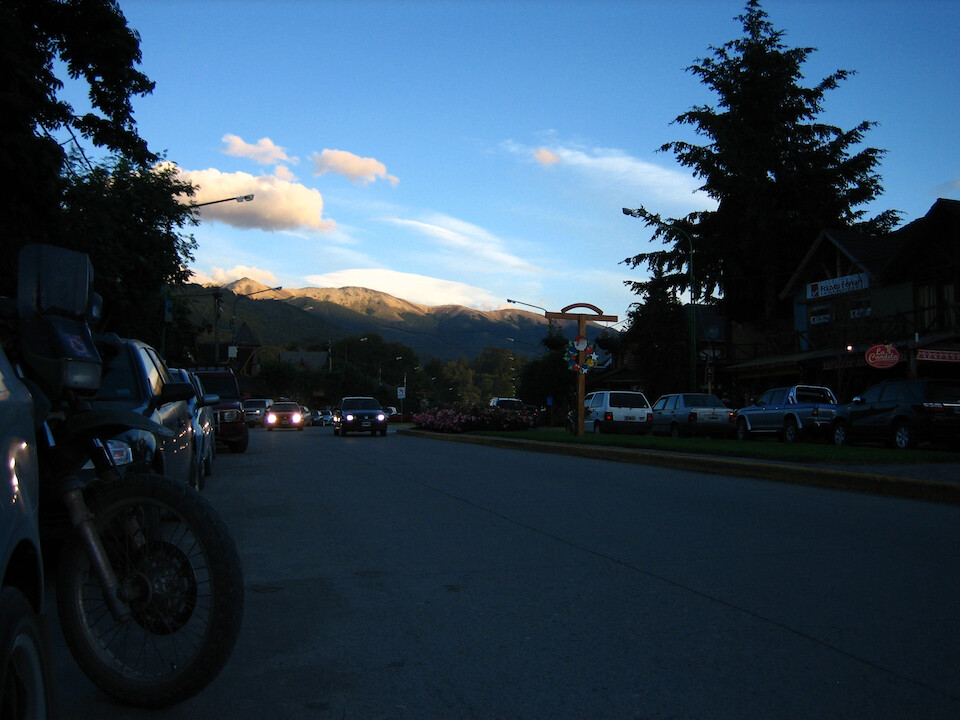
Villa La Angostura is a small town that has recently boomed due to tourism, but it's still charming and...
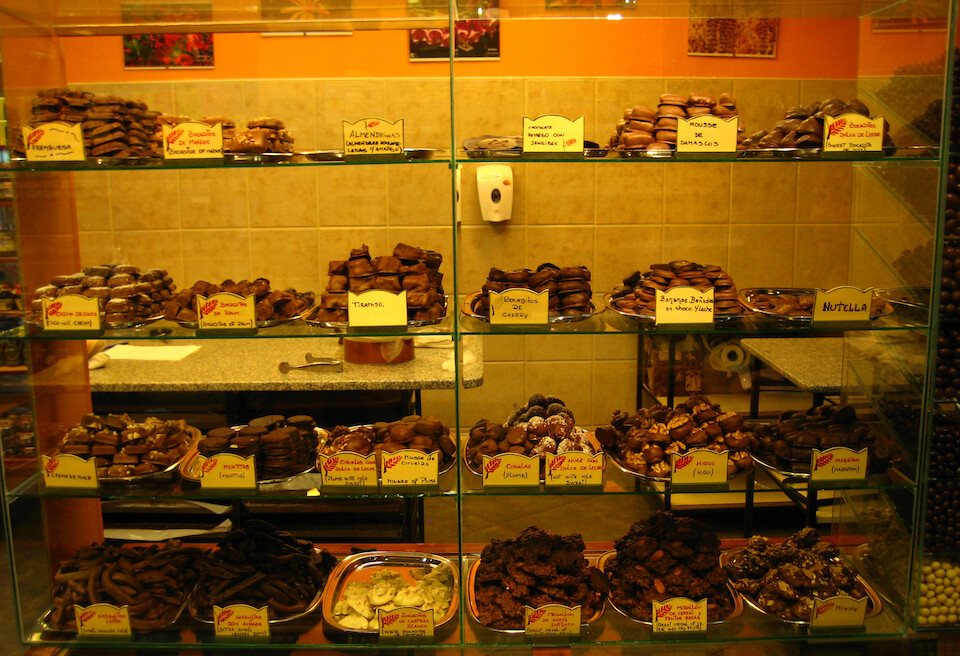
...is known for its numerous chocolatiers, resembling Swiss mountain towns.
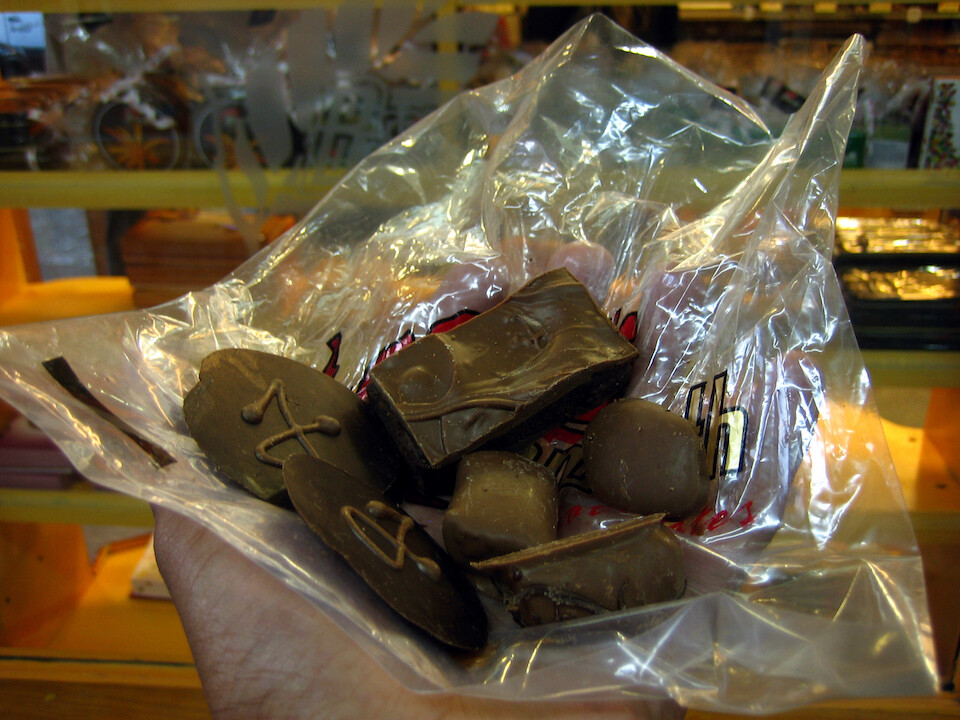
I treated myself to a bag of assorted chocolates and could eat many, many more. They covered all sorts of things with chocolate and fudges in a variety of flavors. The discs are ginger snaps. Mmm.
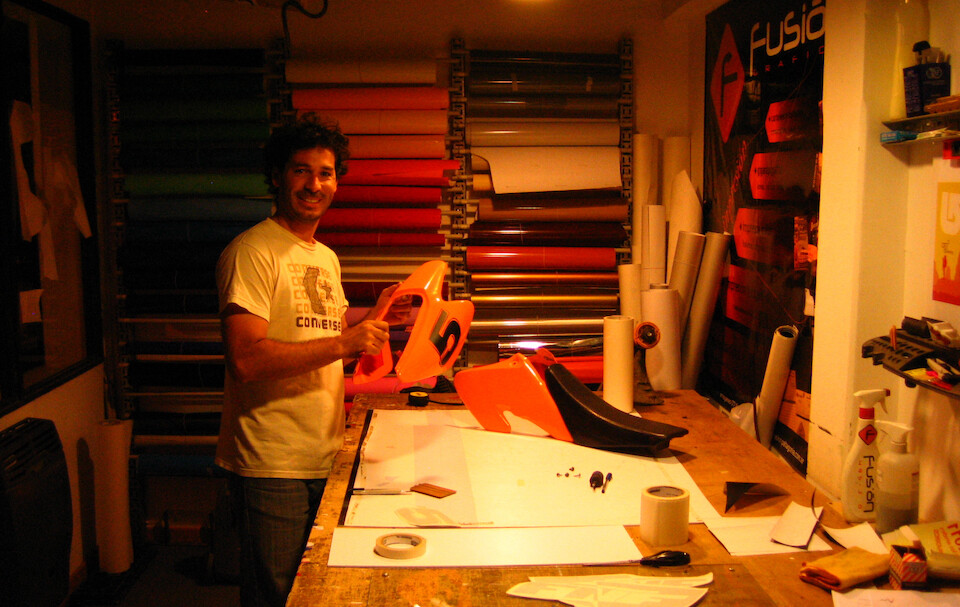
Gustavo in his downtown graphics and sign-making business. He purchased a small 70cc Motomel off-road bike for his 8 year old nephew and was in the process of turning the bike into a look-alike KTM so the young rider could look like his uncle.
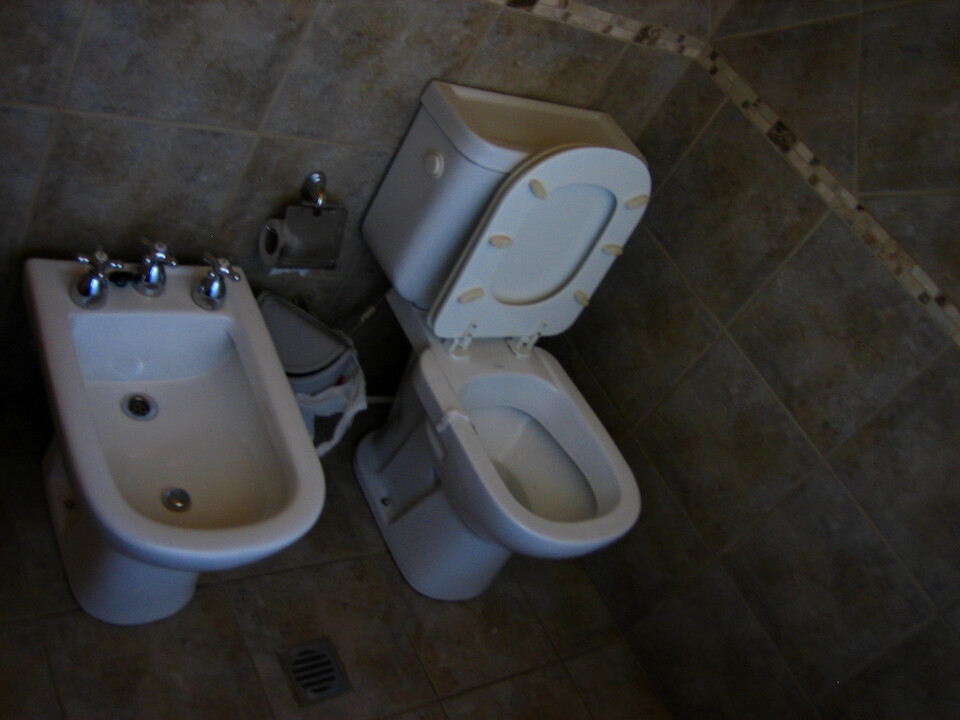
A shot of a typical Argentine bathroom, where the bidet is still in popular use. It's a remnant from their strong European cultural influence. Its use has died down in the western world, but is still going strong in many other areas. Personally, I prefer to use water rather than paper to clean up down there. It's easier on the skin, more sanitary (since paper does not remove all of the waste) and more environmentally friendly (since paper takes a lot of water to make and trees need to be felled). The other issue in favor of water is the strange requirement in Latin America of putting the soiled toiler paper in an external basket, rather than in the toilet bowl. The plumbing of the sewage system, from colonial days, is too small to handle paper, so now that habit is part of the culture today.
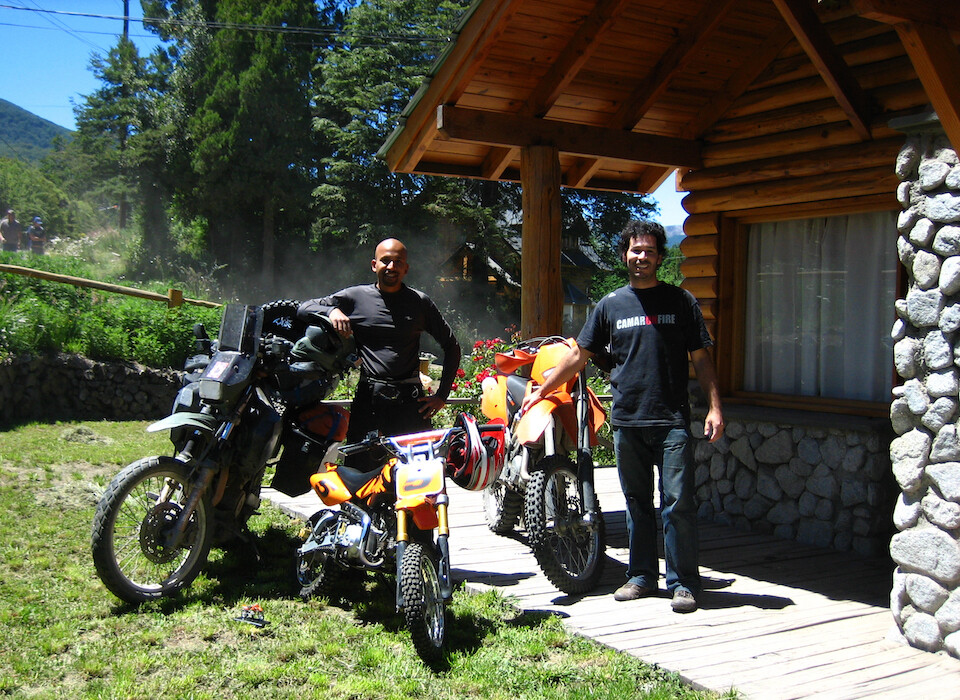
Gustavo and his finished KTM makeover of the Motomel outside his mountain-style home.
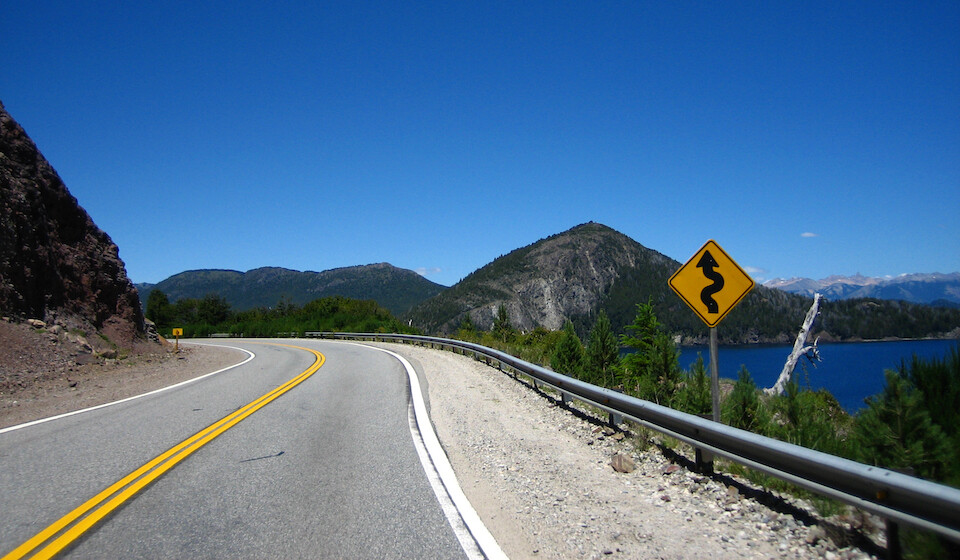
From Villa La Angostura, I continued along the shores of Lago Nahuel Huapi.
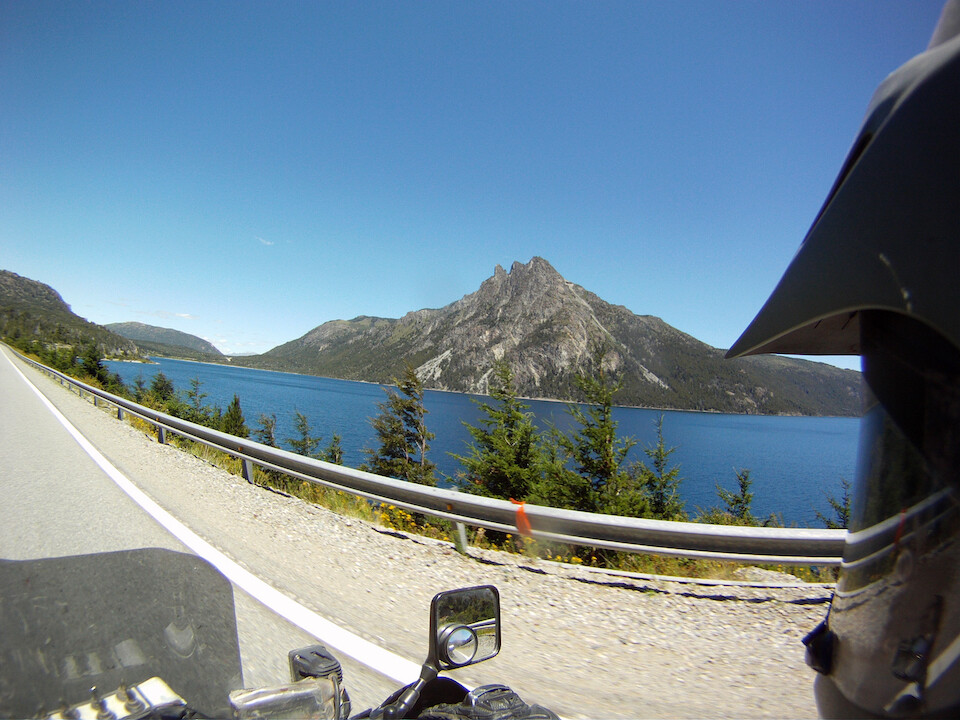
Distracting views.
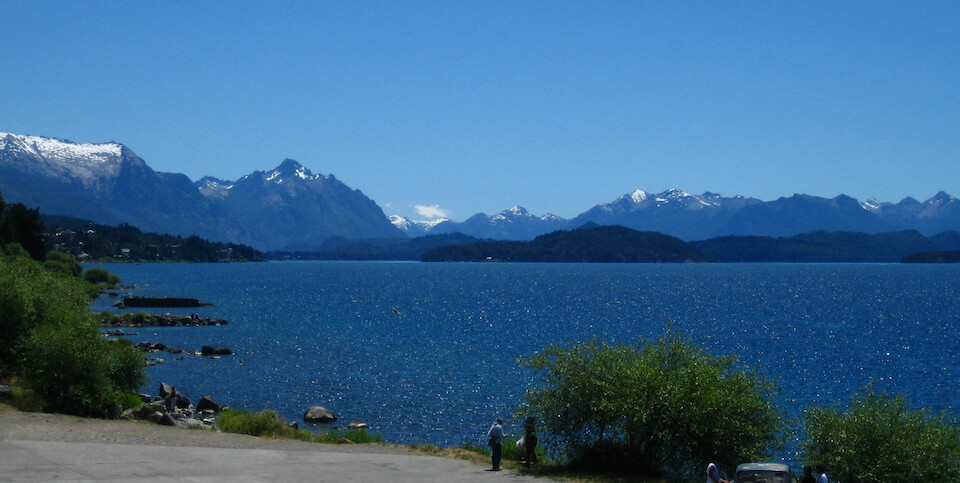
I passed through the Lake District's biggest city of San Carlos de Bariloche and stopped for lunch with a fantastic view of the Nahuel Huapi Lake.
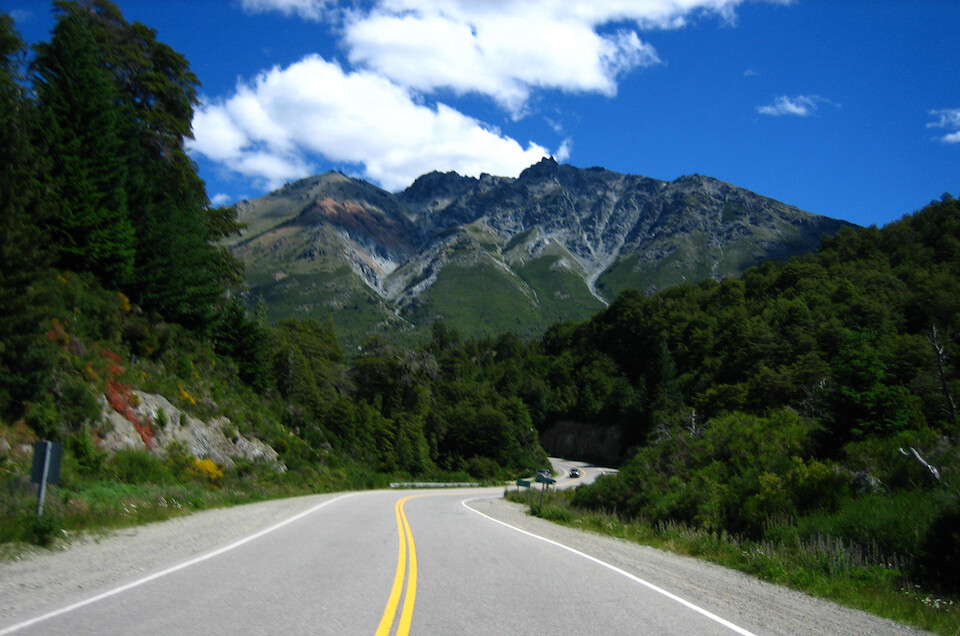
The ride through this whole area is well-worth dealing with the increased traffic due to its popularity.
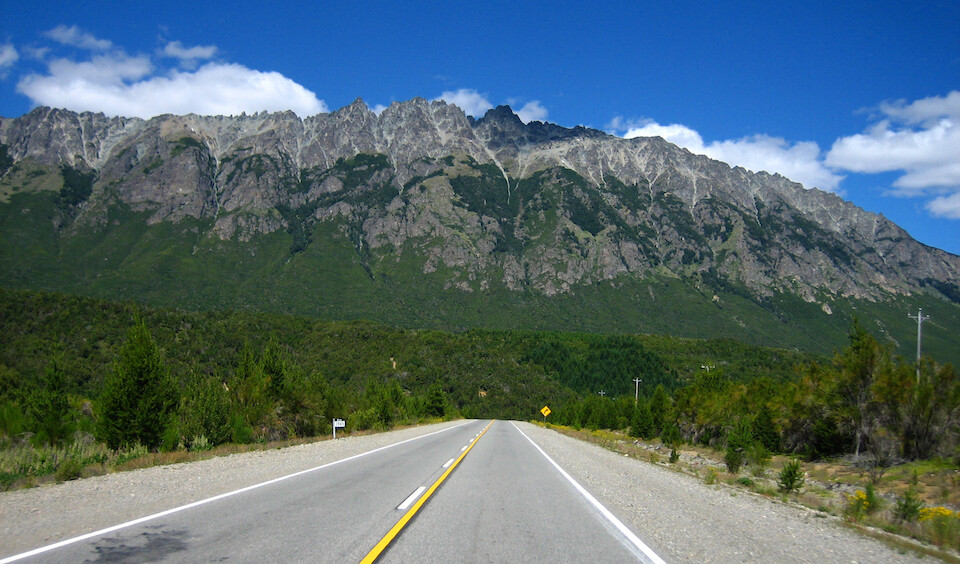
Near the town of El Bolson with steep mountains showing the gradual fade from trees, through the treeline to bare rock.
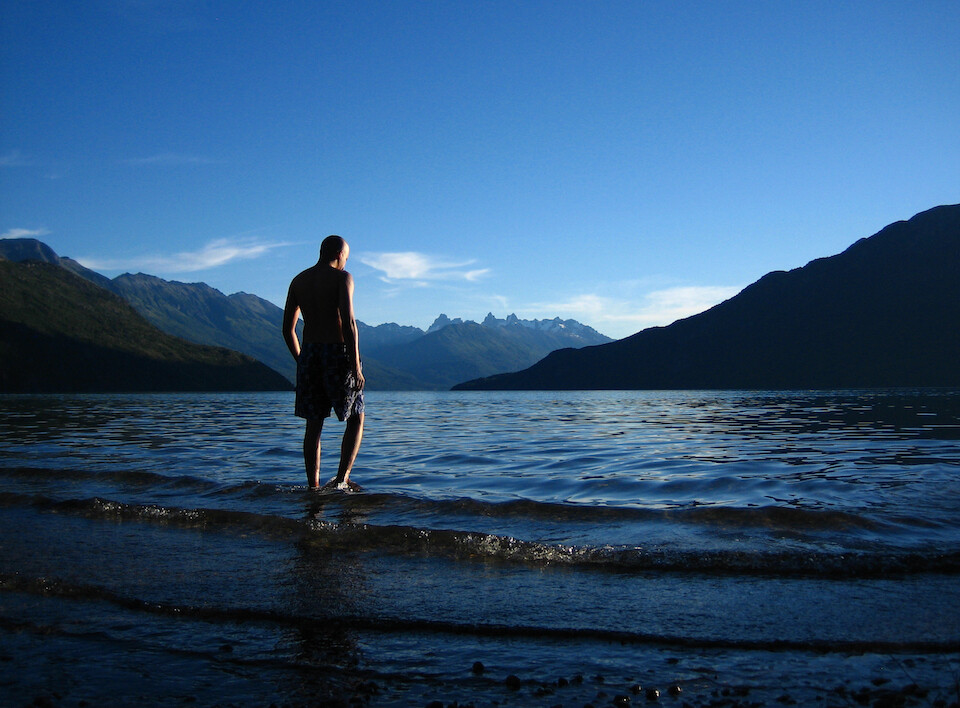
Taking a dip in Lago Puelo, south of El Bolson. There was a place to camp near the lake and the clear waters tempted me in. It was cold, for sure, but refreshing all the same.
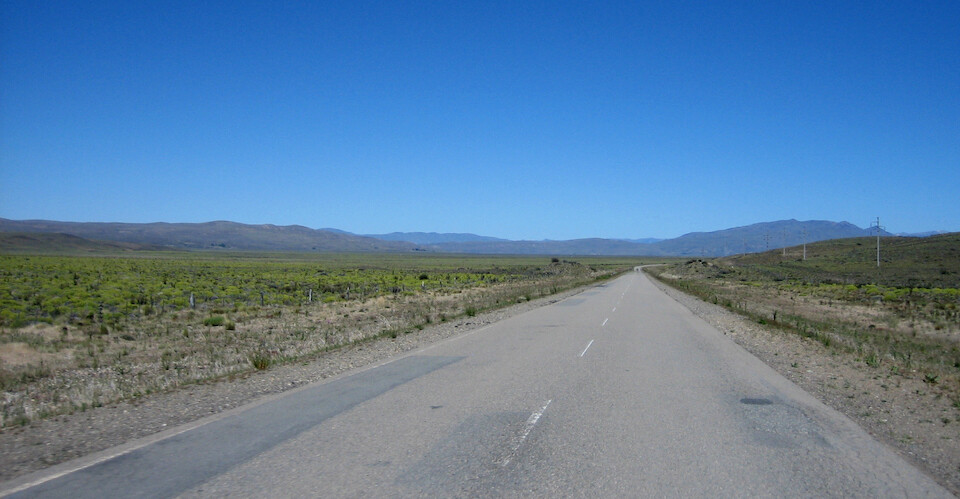
South of El Bolson, Ruta 40 exits the Lake District and we're back to the wind-swept steppes of Patagonia.
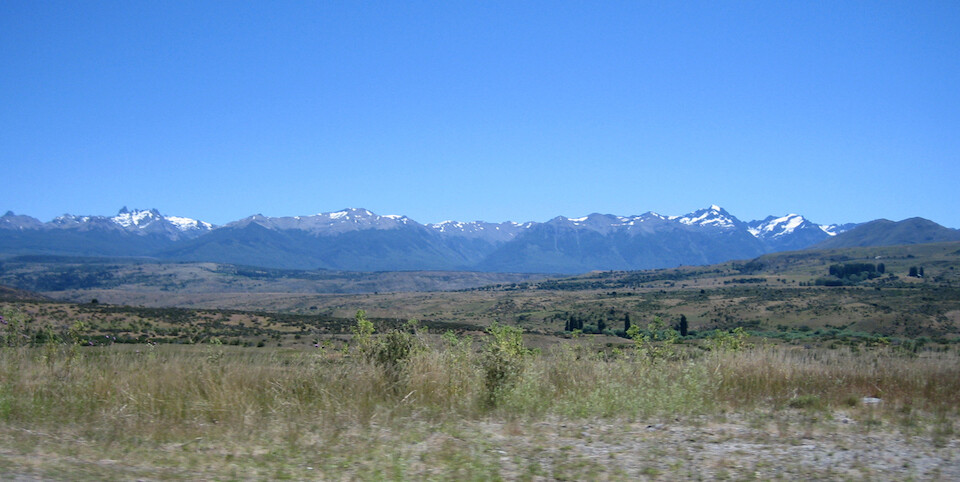
The mountains were far away and I wished there was a route through them.

I stocked up on supplies and petrol in Esquel, the last town before crossing into Chile.
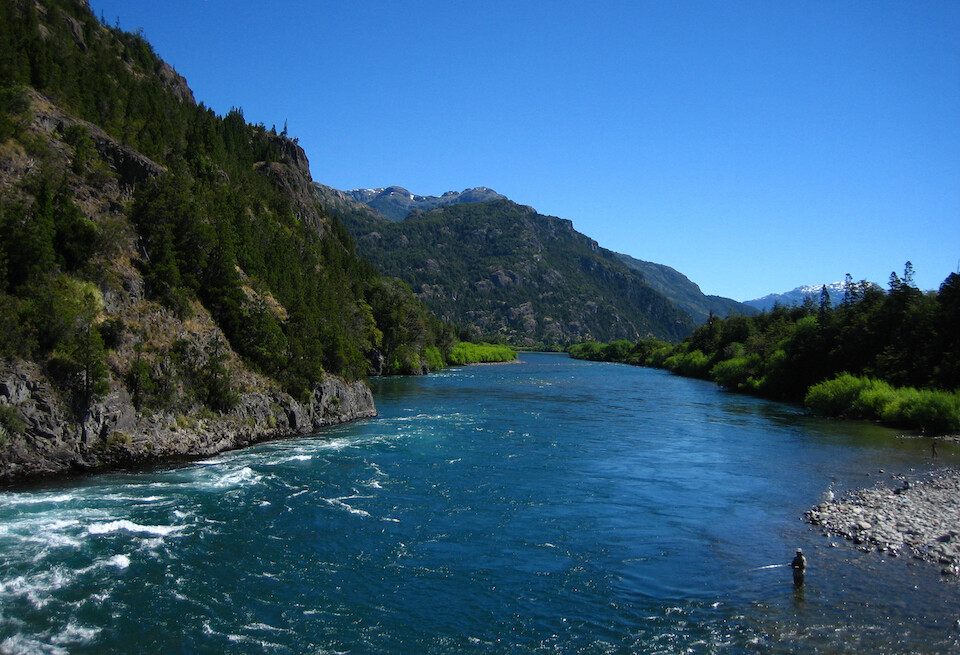
Getting back into the mountains and feeling energized by the flowing waters.
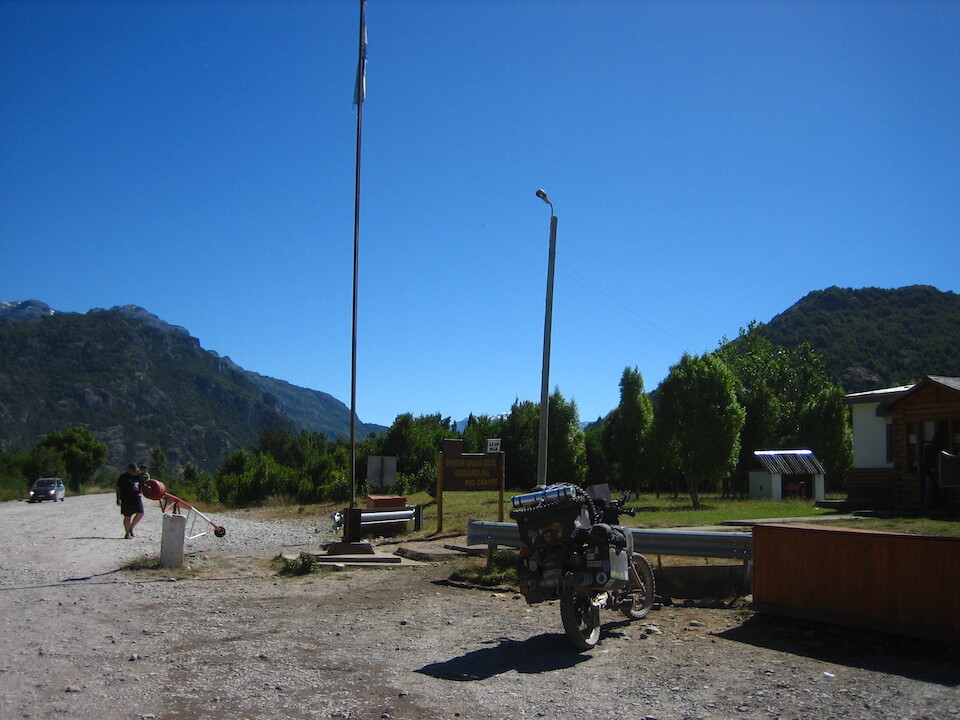
At the Rio Grande Argentine border crossing, which gives you road access to the Carretera Austral.
Next: Patagonia, Part 2: Carretera Austral | Futalefú to Puerto Aisén
Previous: Argentina, Part 5: Central Ruta 40 | Cachi to Mendoza